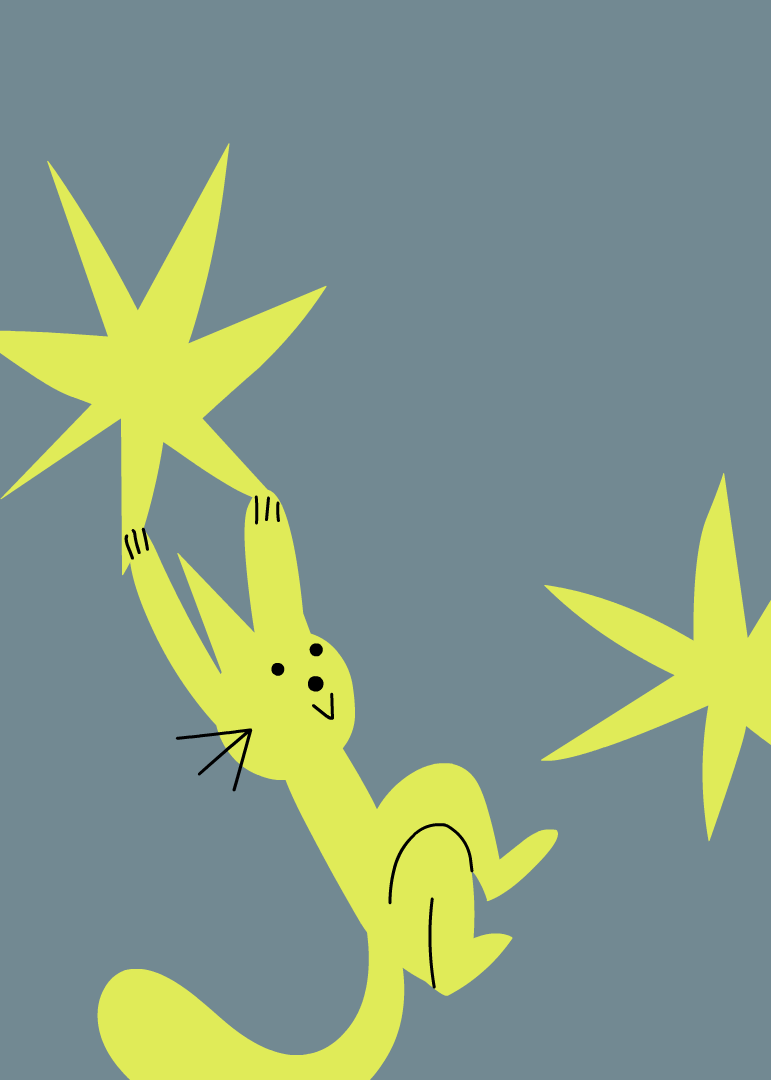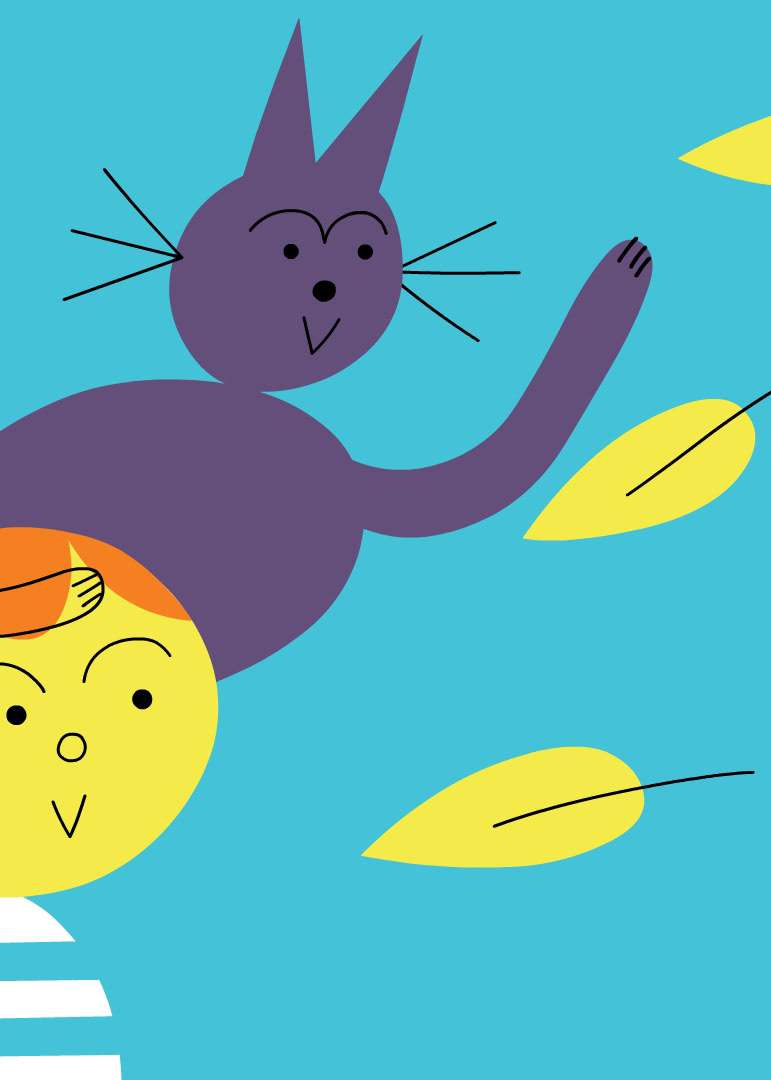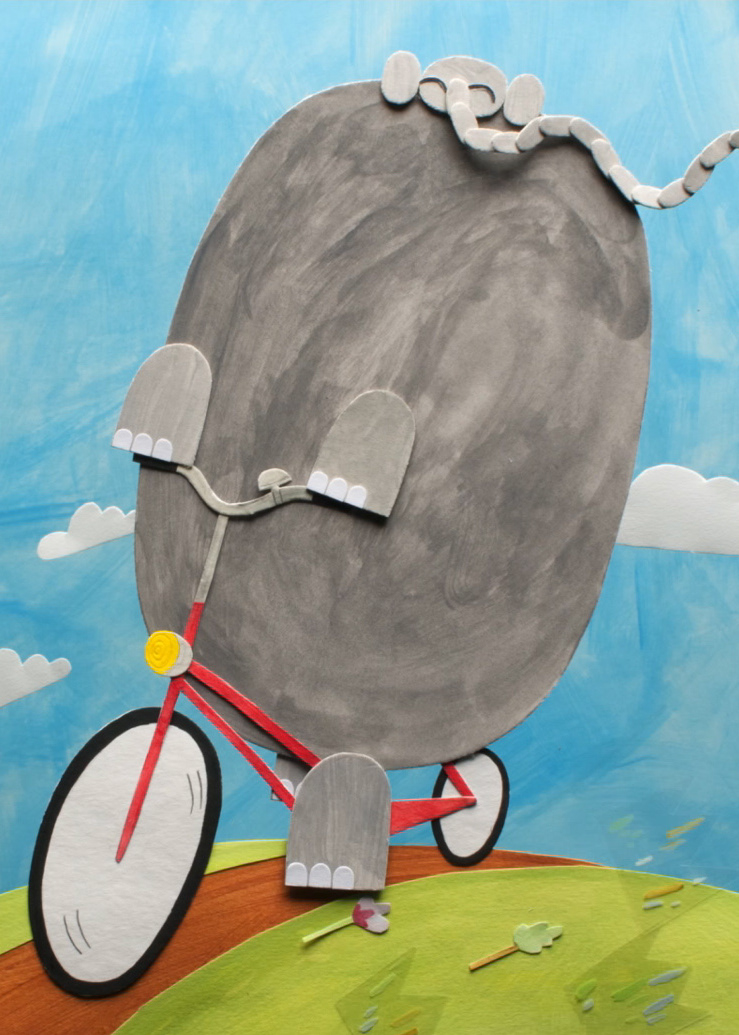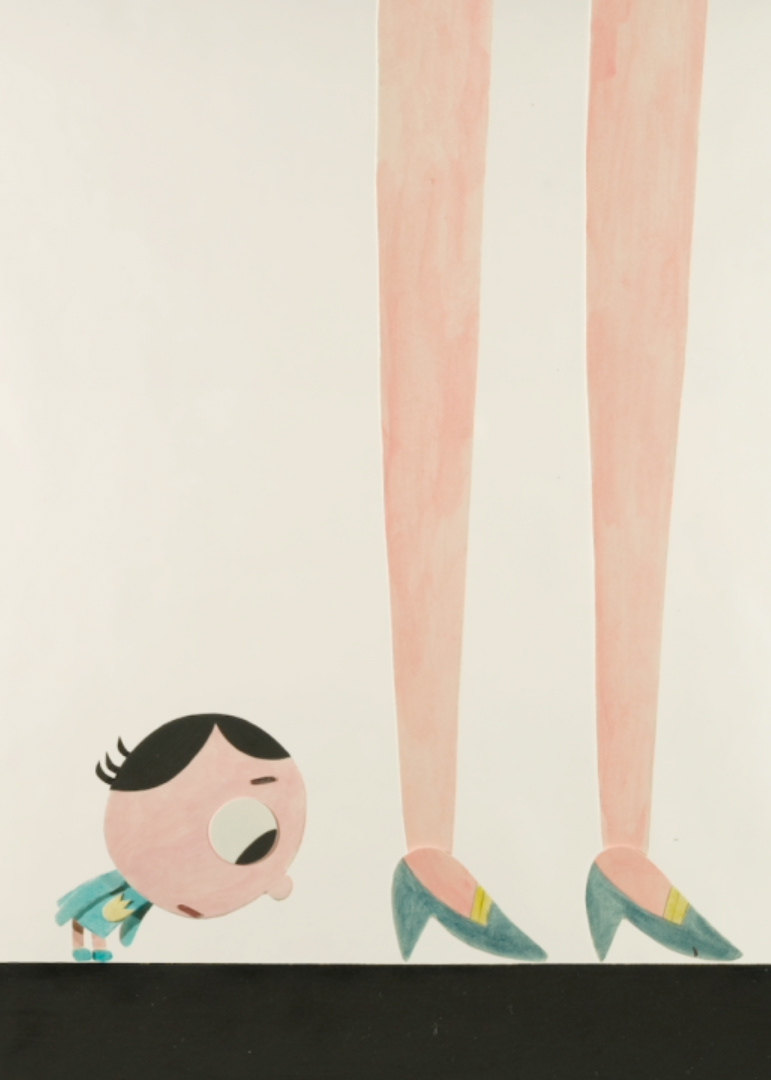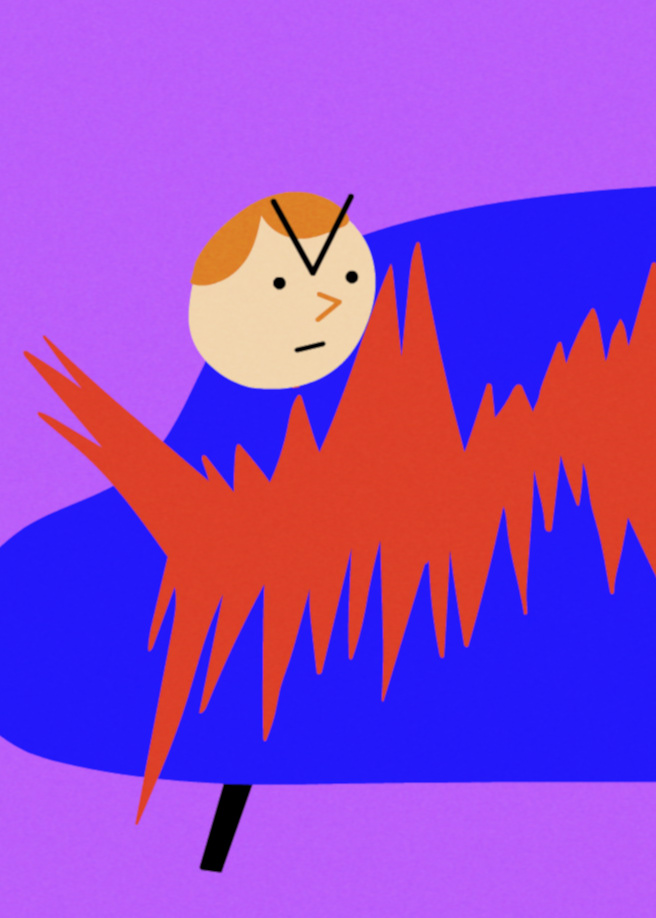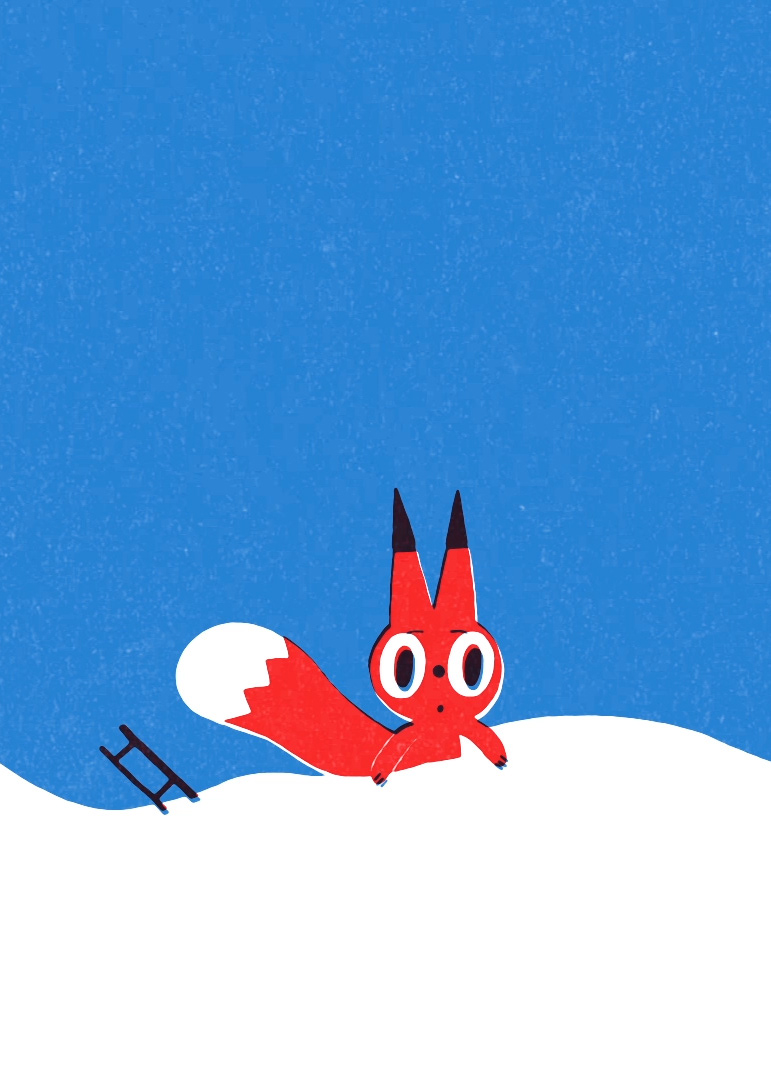In December 2024, our animated feature film, Animal Tales of Christmas Magic (Le Grand Noël des Animaux), was released in cinemas across France and other countries.
The film is composed of five chapters, each directed by a different filmmaker: Caroline Attia, Ceylan Beyoğlu, Olesya Shchukina (me), Haruna Kishi, and Camille Alméras. Short animations connecting the stories were created by Natalia Chernysheva.
Produced by Les Valseurs and Luftkind Filmverleih.
Distributed: Little KMBO.
My chapter The Last Christmas Tree (Le dernier arbre de Noël) tells the story of a little girl and her busy mother. On Christmas Eve, while other families have already brought and decorated their Christmas trees, the mother is racing to finish her freelance project.
Meanwhile, deep in the forest, a group of animals makes a startling discovery—only one tiny Christmas tree remains. They are determined to keep it at all costs as they believe that without it, Santa won’t bring them presents. But just as they vow to protect their precious tree, they realize that the little girl and her mother have entered the forest with plans to cut it down!
Work on the film began back in 2017, but production officially started in 2023. I'll be sharing some early sketches and work-in-progress materials.
For my chapter, I wrote the script, created the storyboard and animatic, and designed both the characters and backgrounds.
To find an idea, I usually need just a blank sheet of paper and a pencil. I start by doodling or writing whatever comes to mind, and suddenly, an idea begins to take shape.
Here are some of the very first sketches I created. From these, I wrote two short synopses, and the producers chose one to move forward with.
These are the very first colored drawings I sent to the producers to illustrate my ideas:

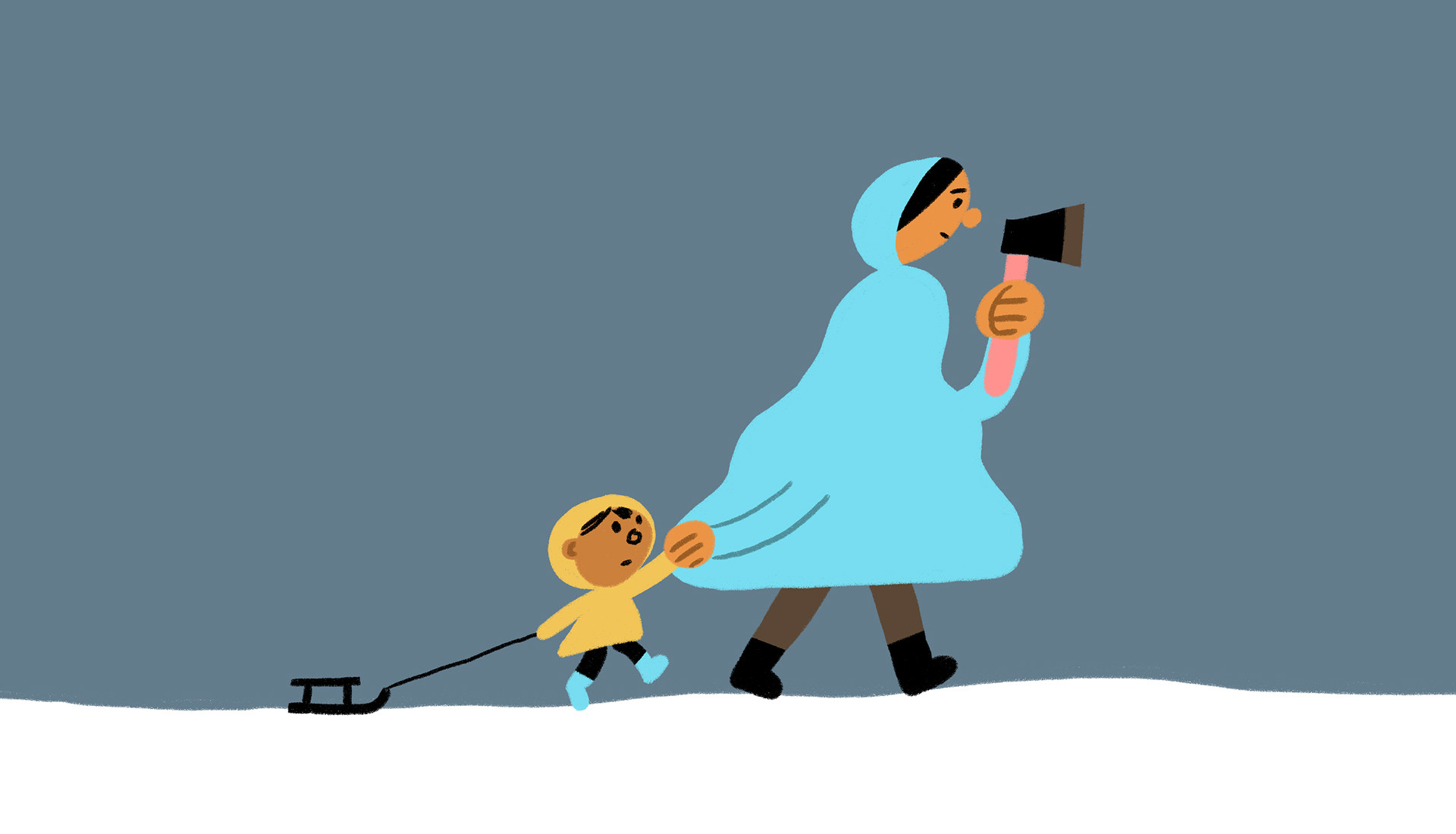
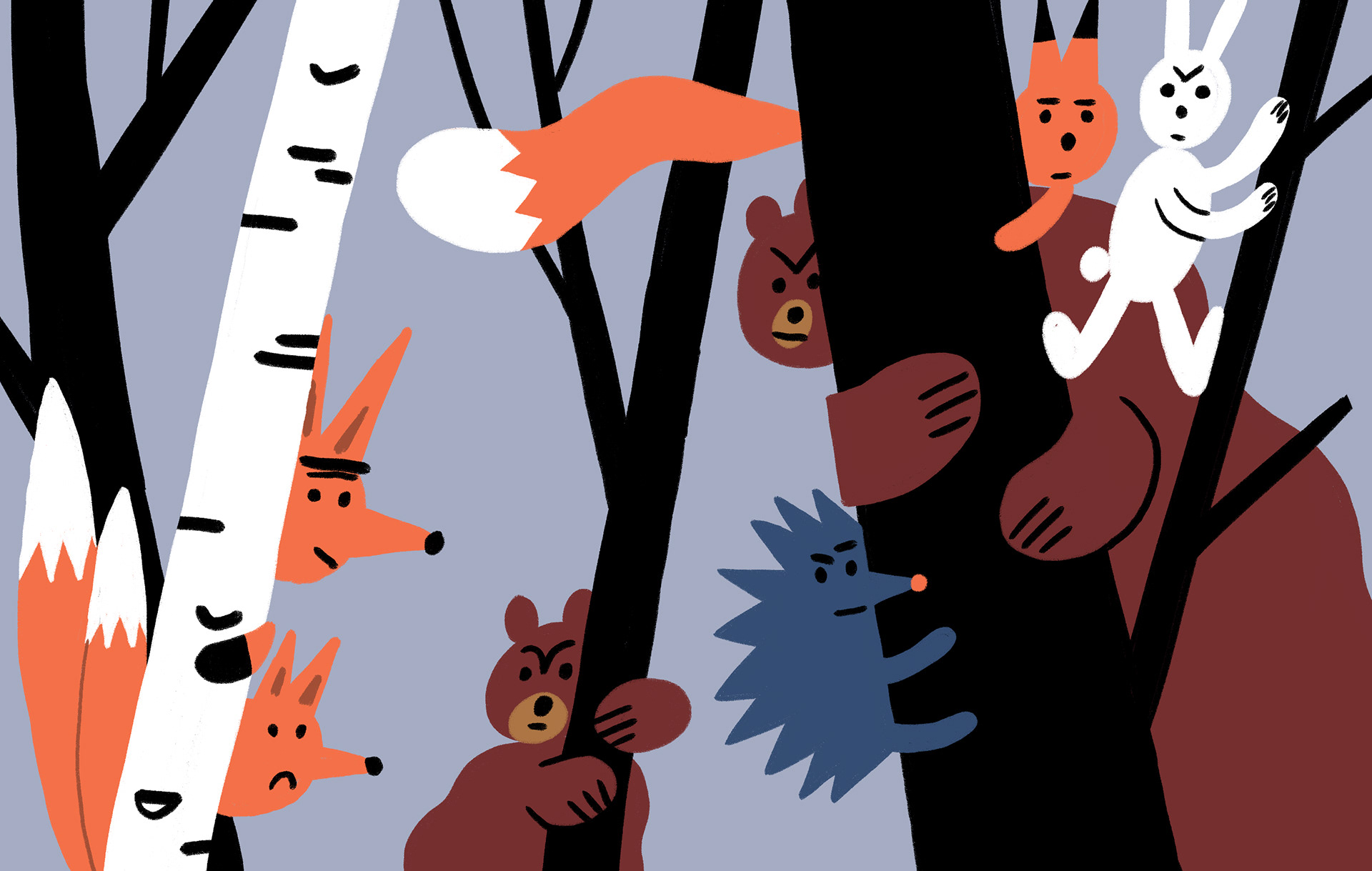
Very early character designs:
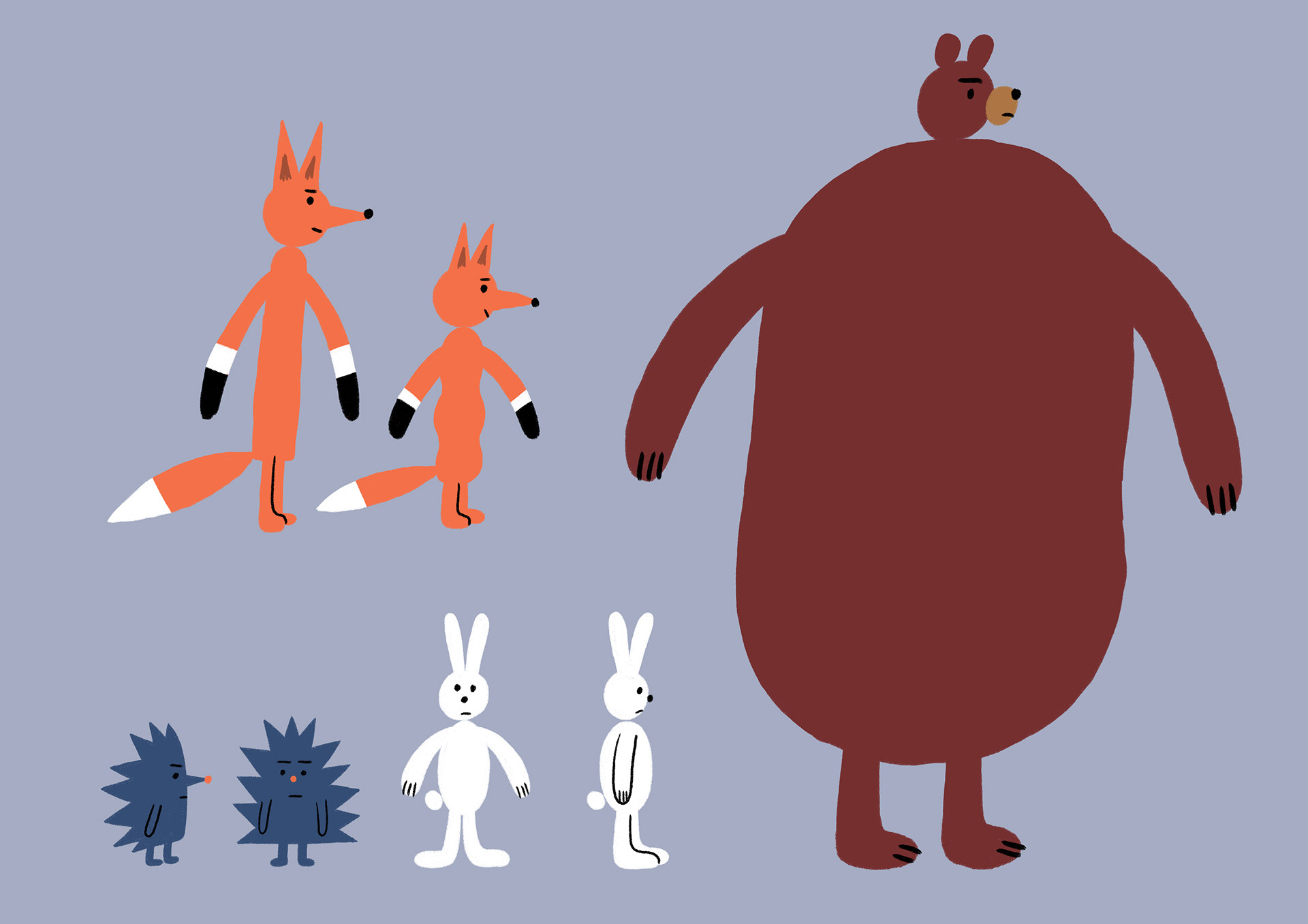
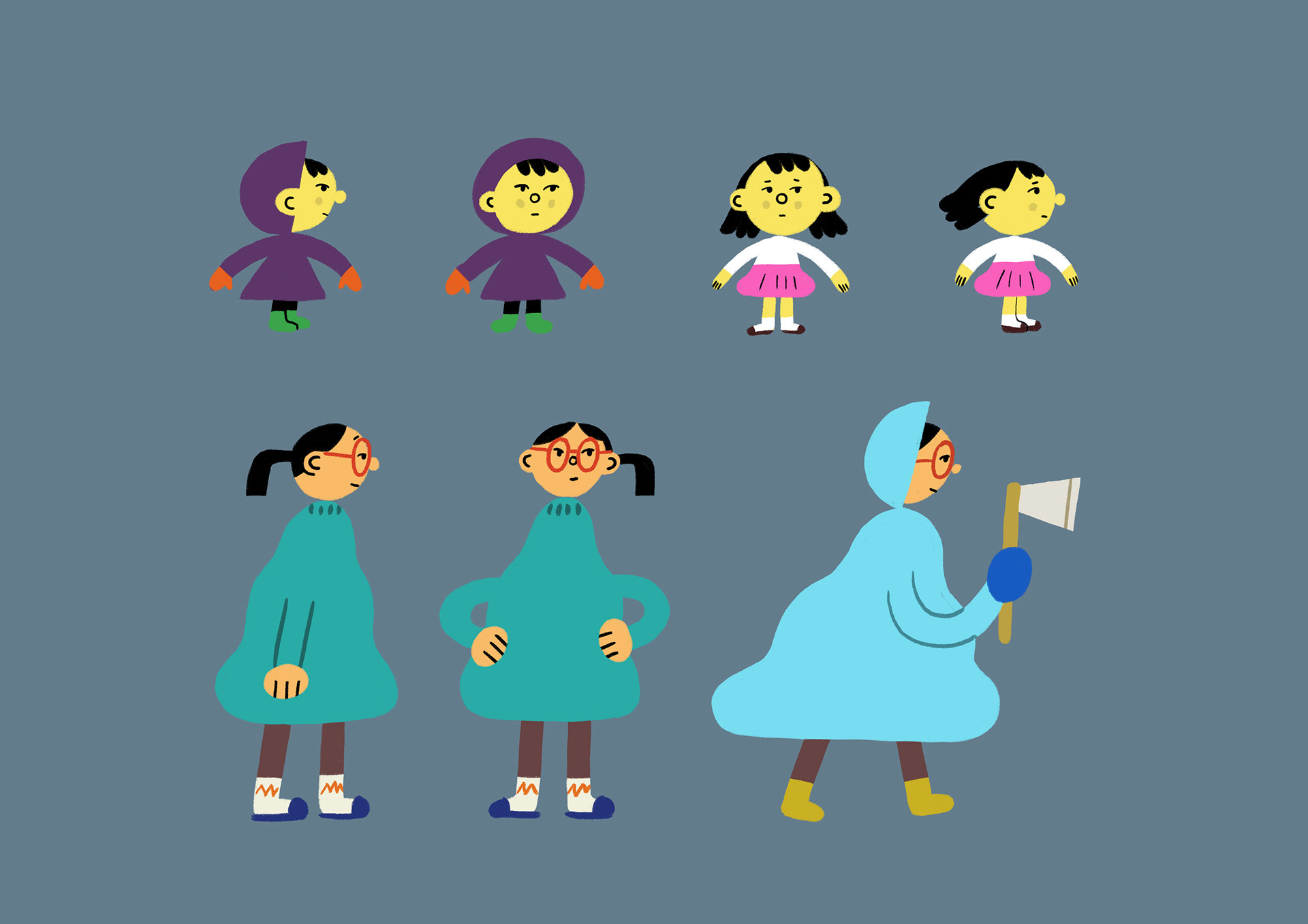
More concept arts:
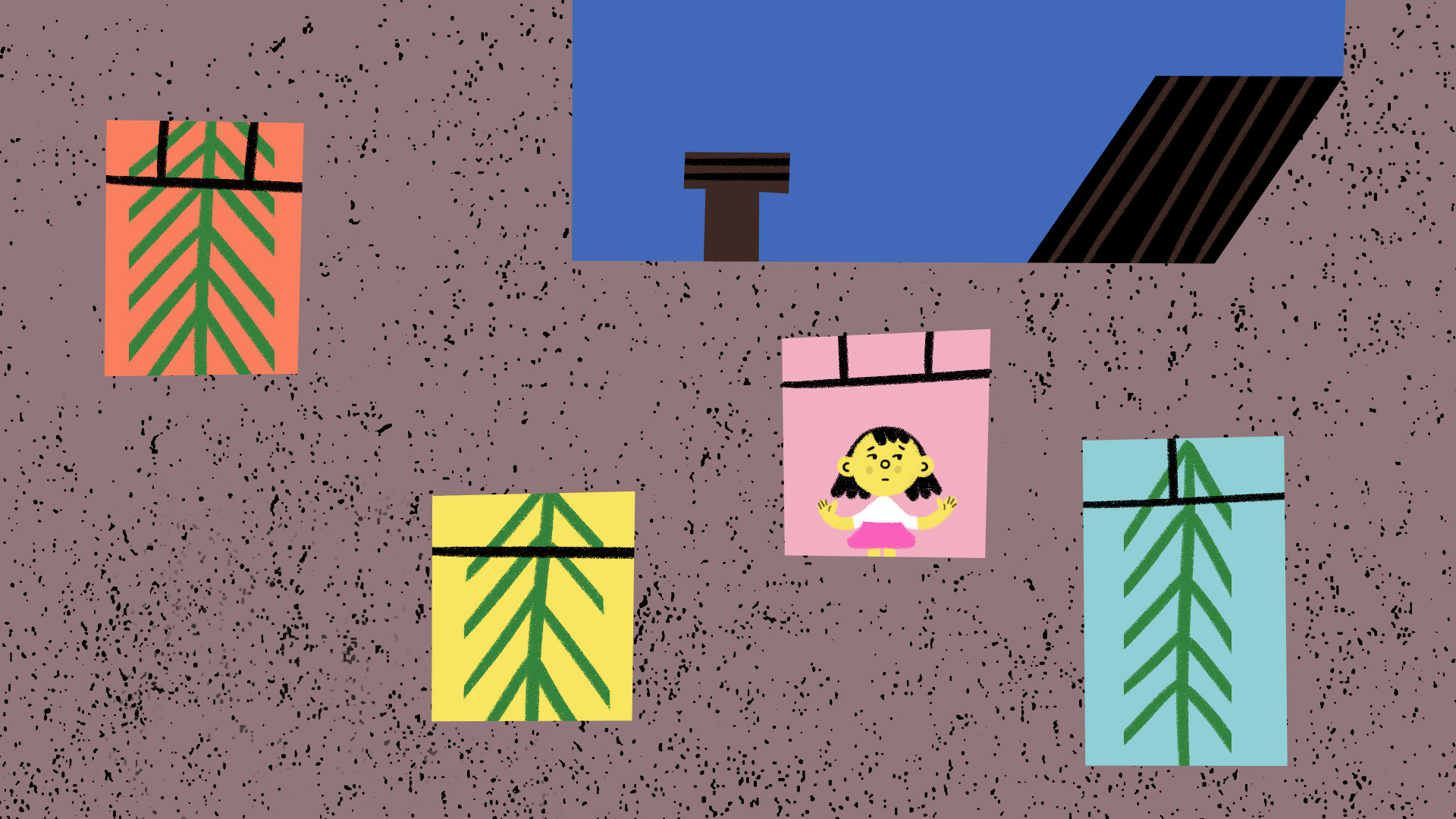
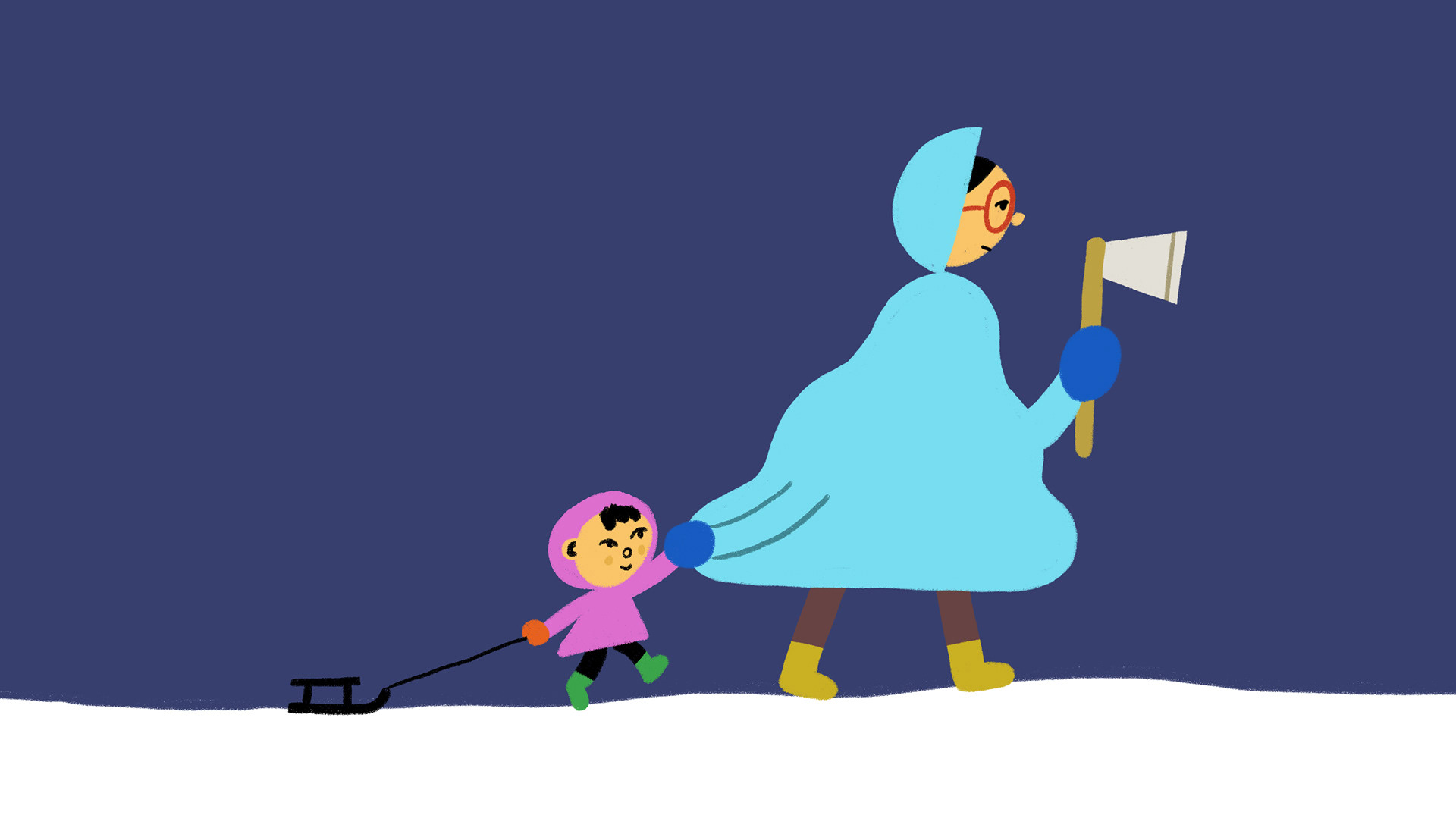
Early animation tests by Viviane Karpp. I aimed to blend cut-out and hand-drawn animation to create a fluid and playful style.
Early designs of the kids' characters. All of them made it into the final film, though with slightly different color schemes.
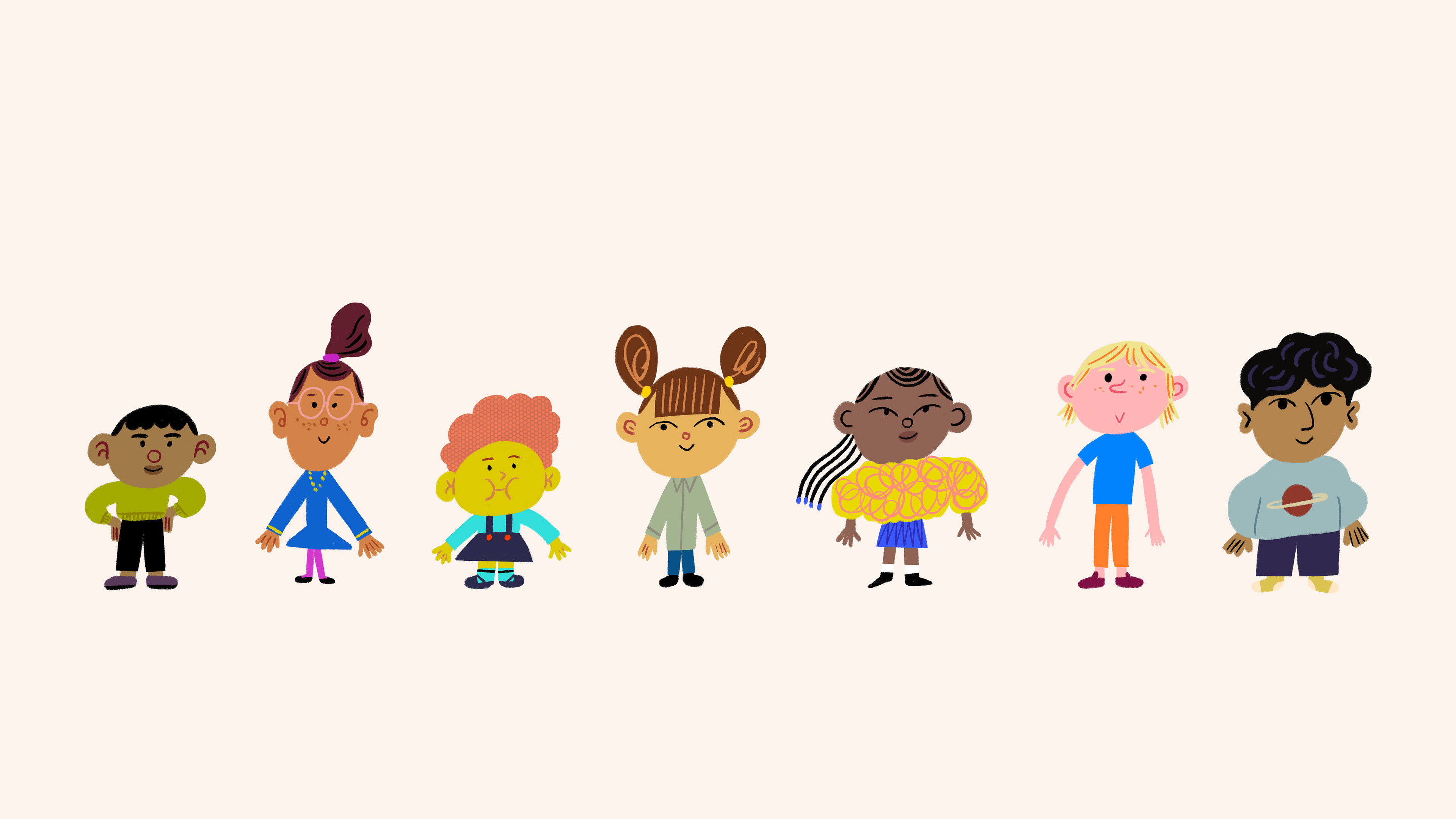
I gathered a variety of references: illustrations by Yuri Vasnetsov, photos of winter forests, and screenshots from Soviet animations I loved watching as a kid. I especially recommend to check The Snow Queen (1957) directed by Lev Atomanov.


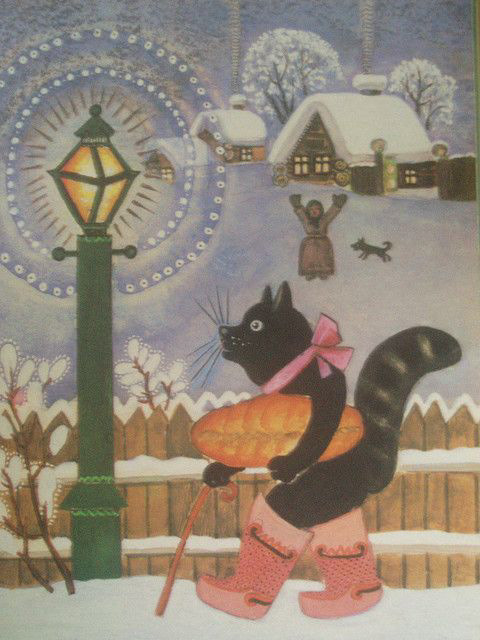

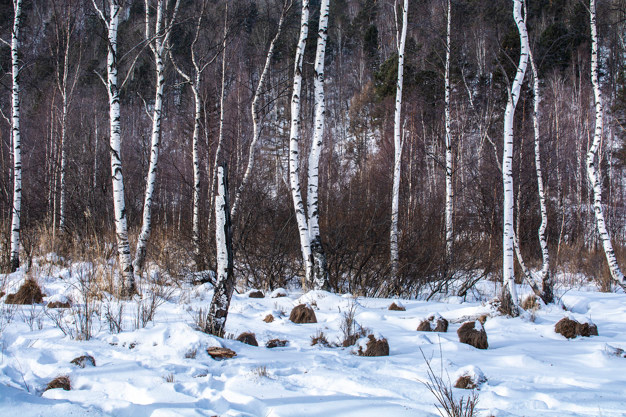
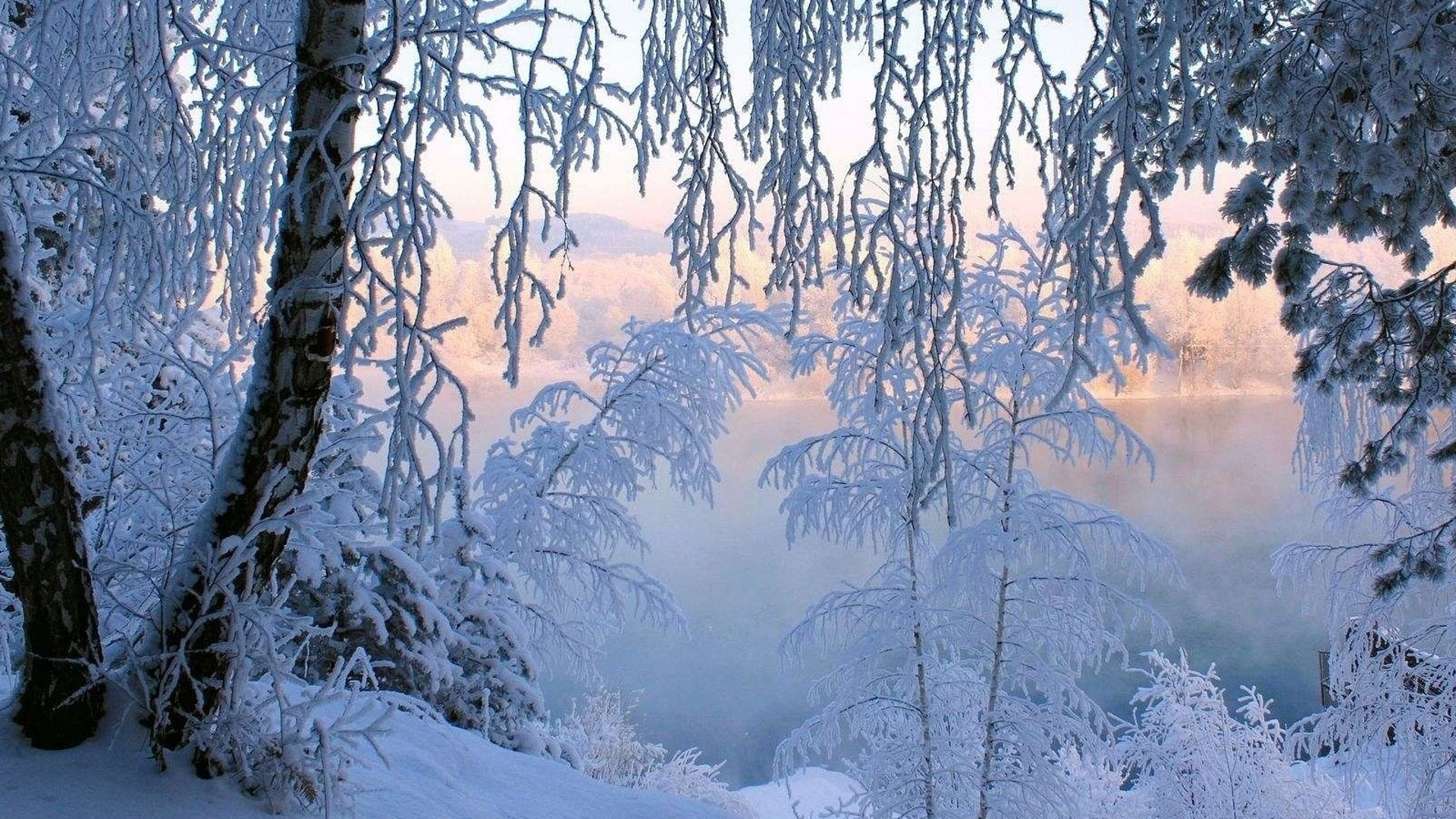
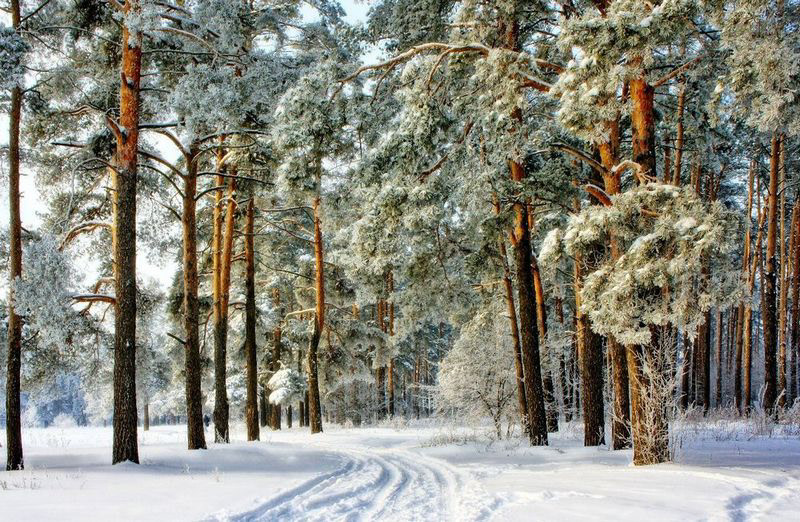
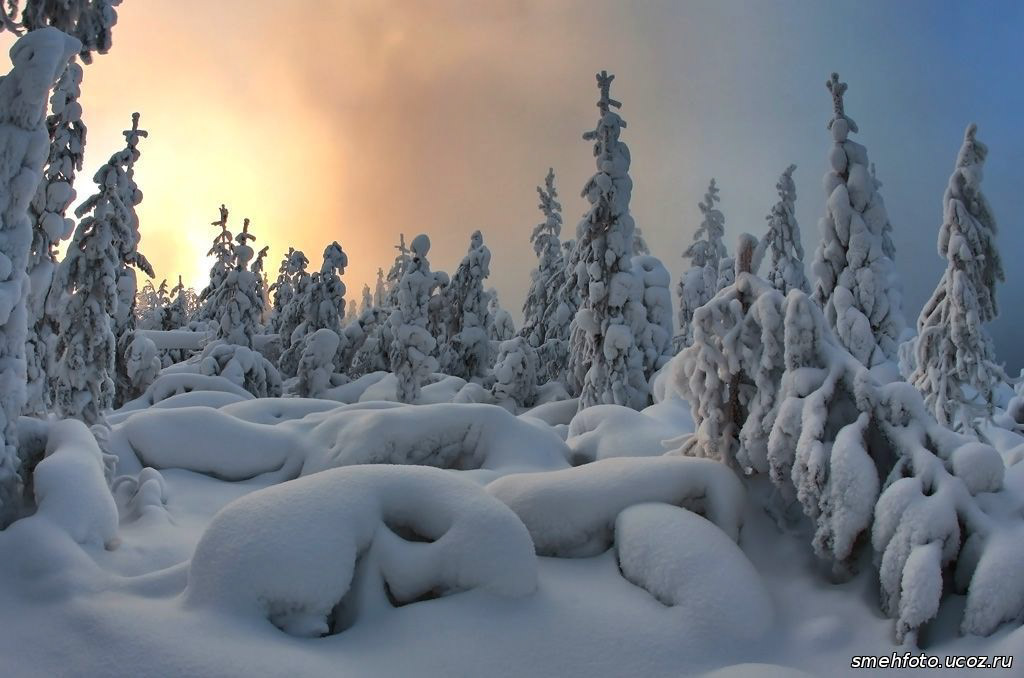
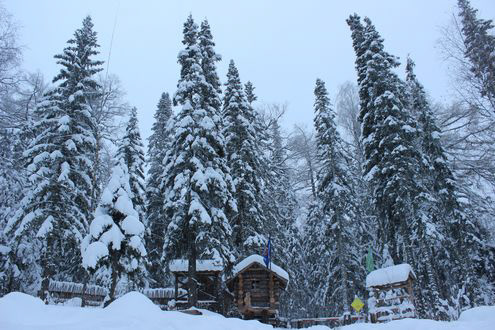
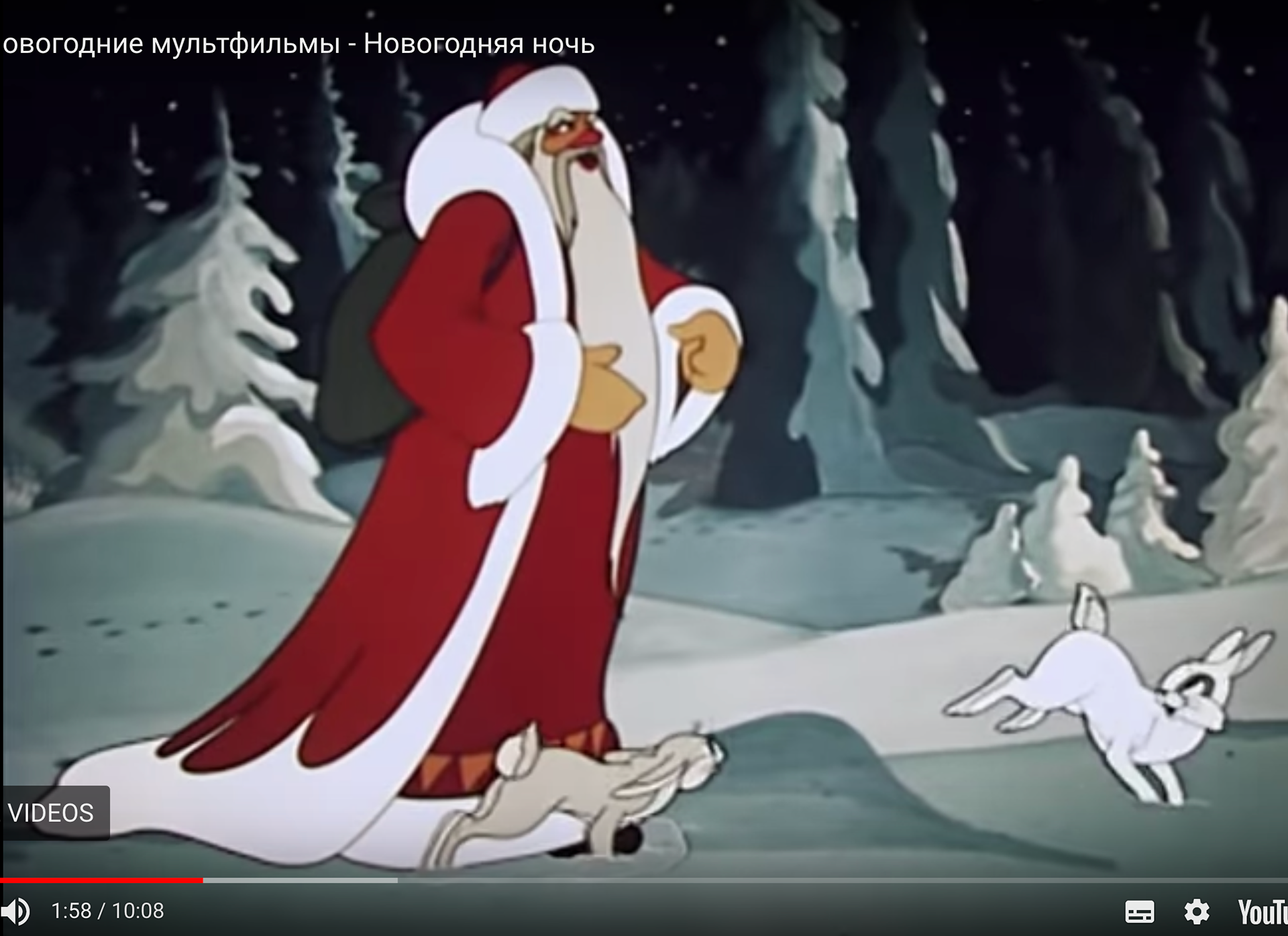
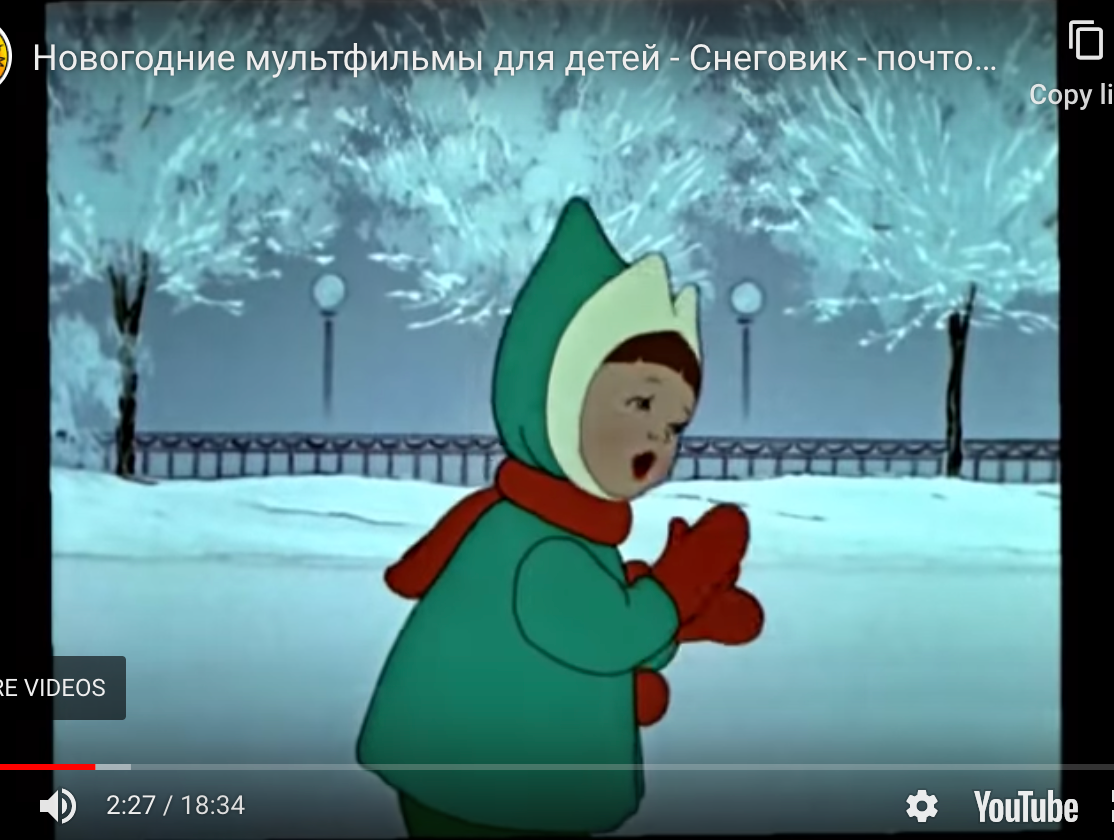
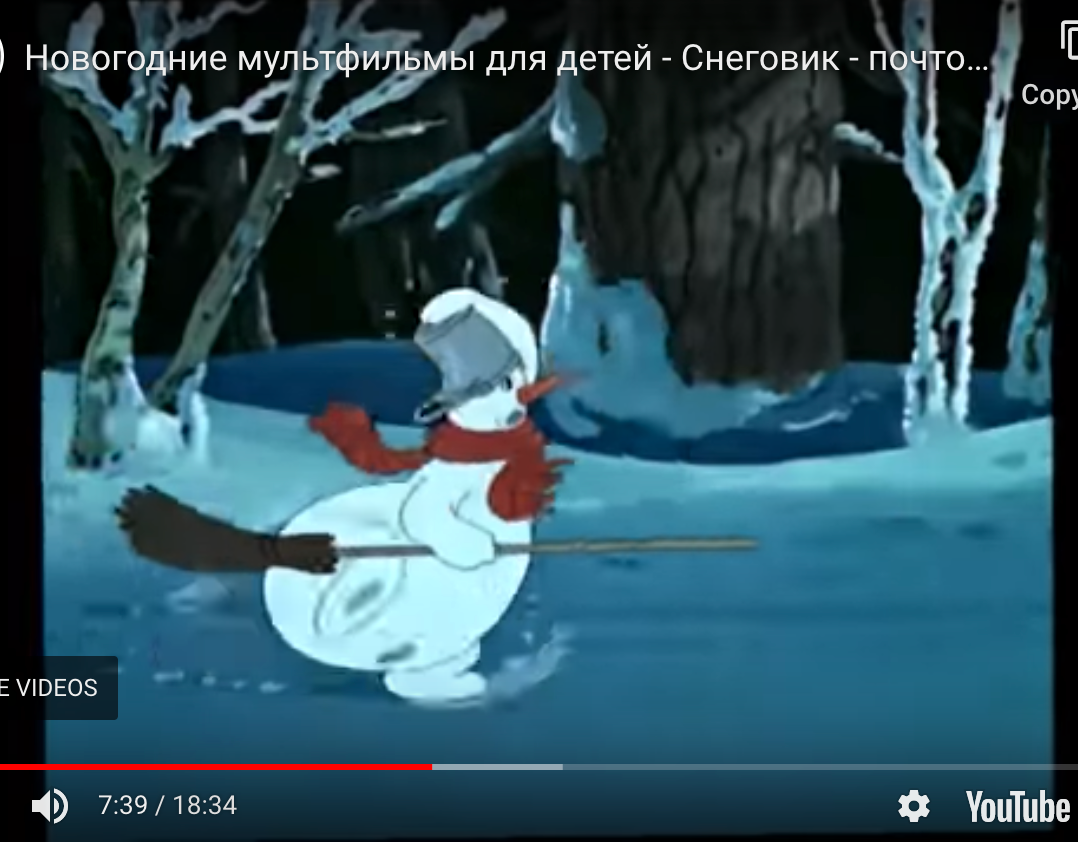

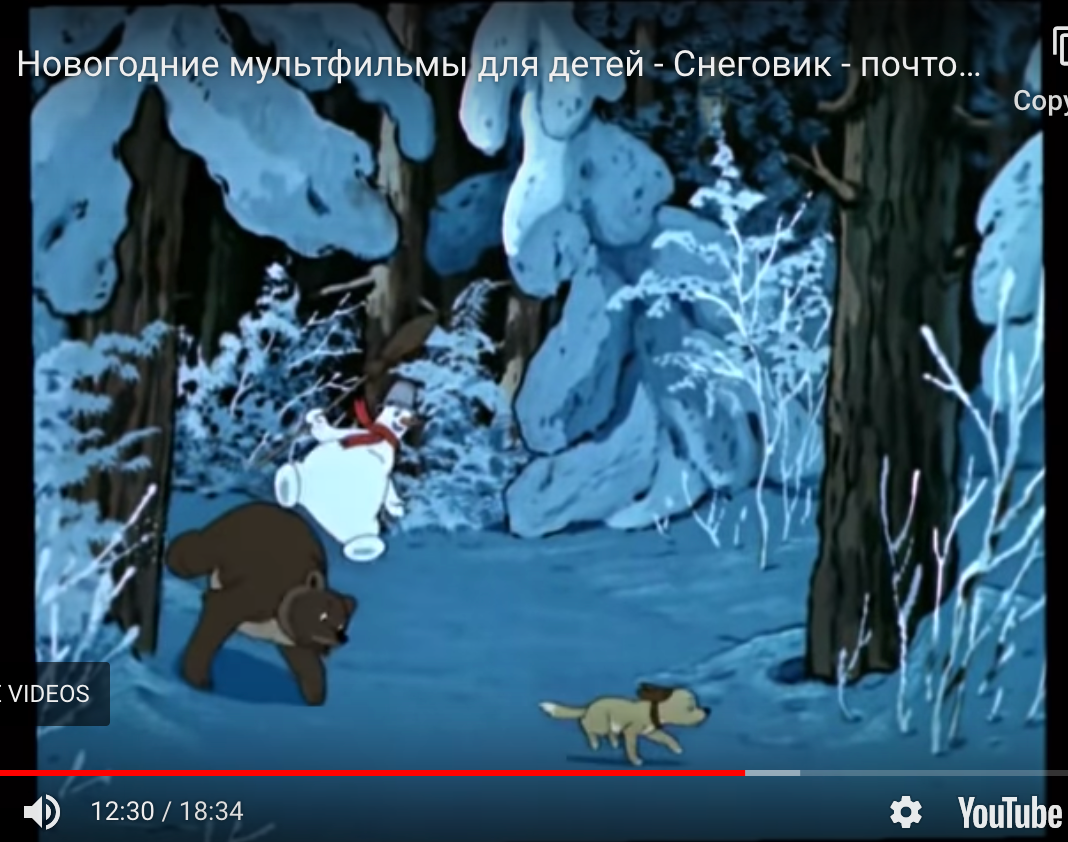
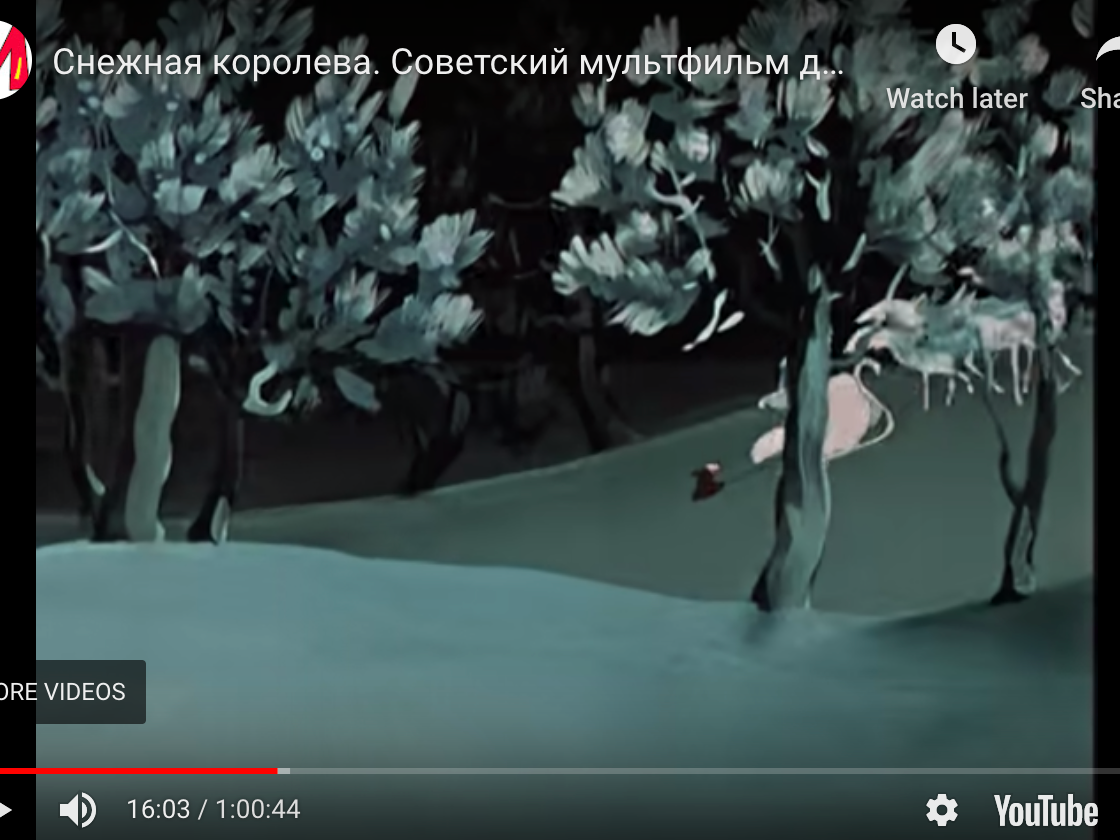

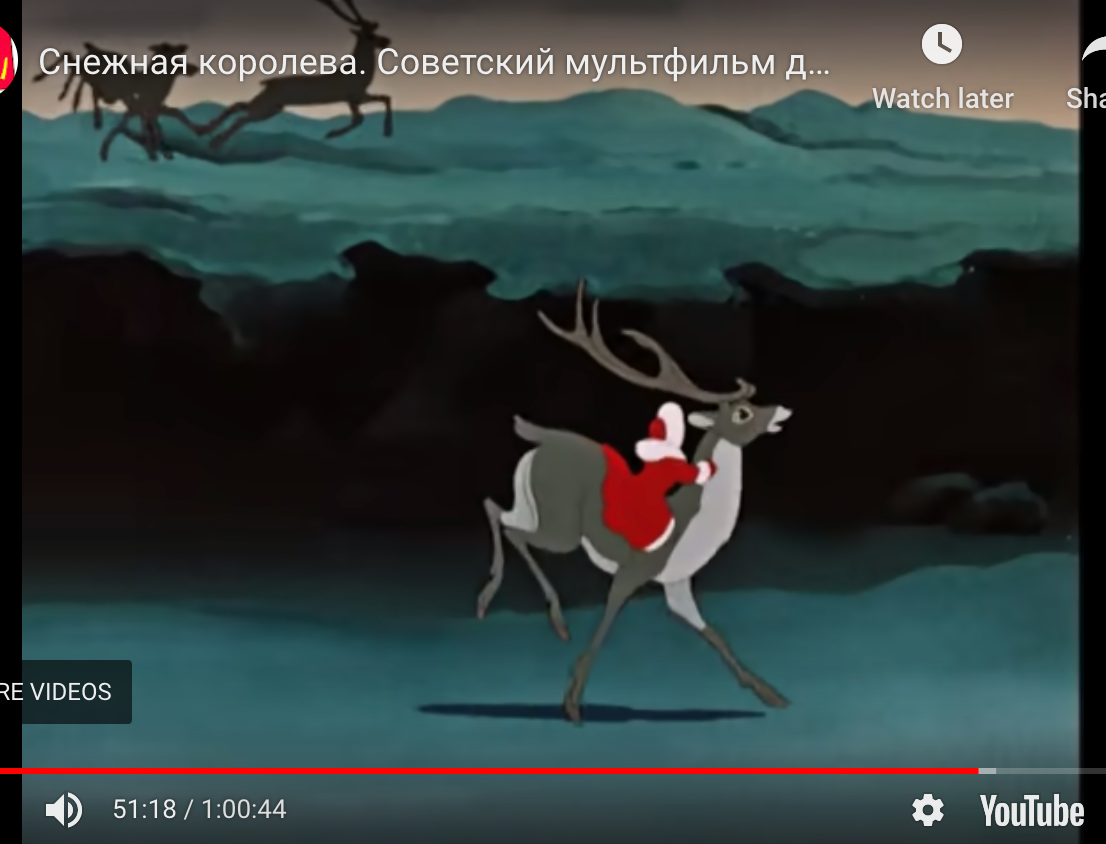
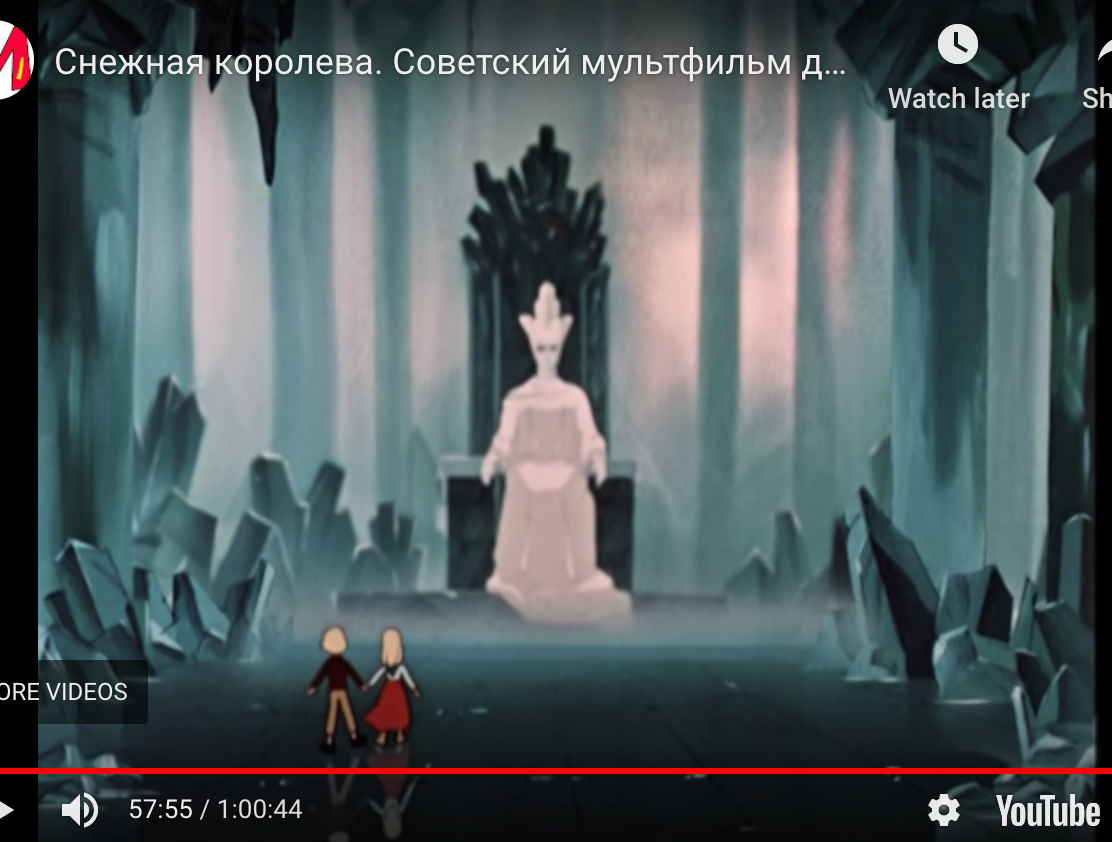
I didn’t refer to them directly while working on the film, but I believe they still influenced me, quietly shaping my work in the subconscious.
For the backgrounds, I wanted to keep them simple yet stylized, with a touch of collage. The sky was also a key challenge for me: should it be flat or have a gradient?

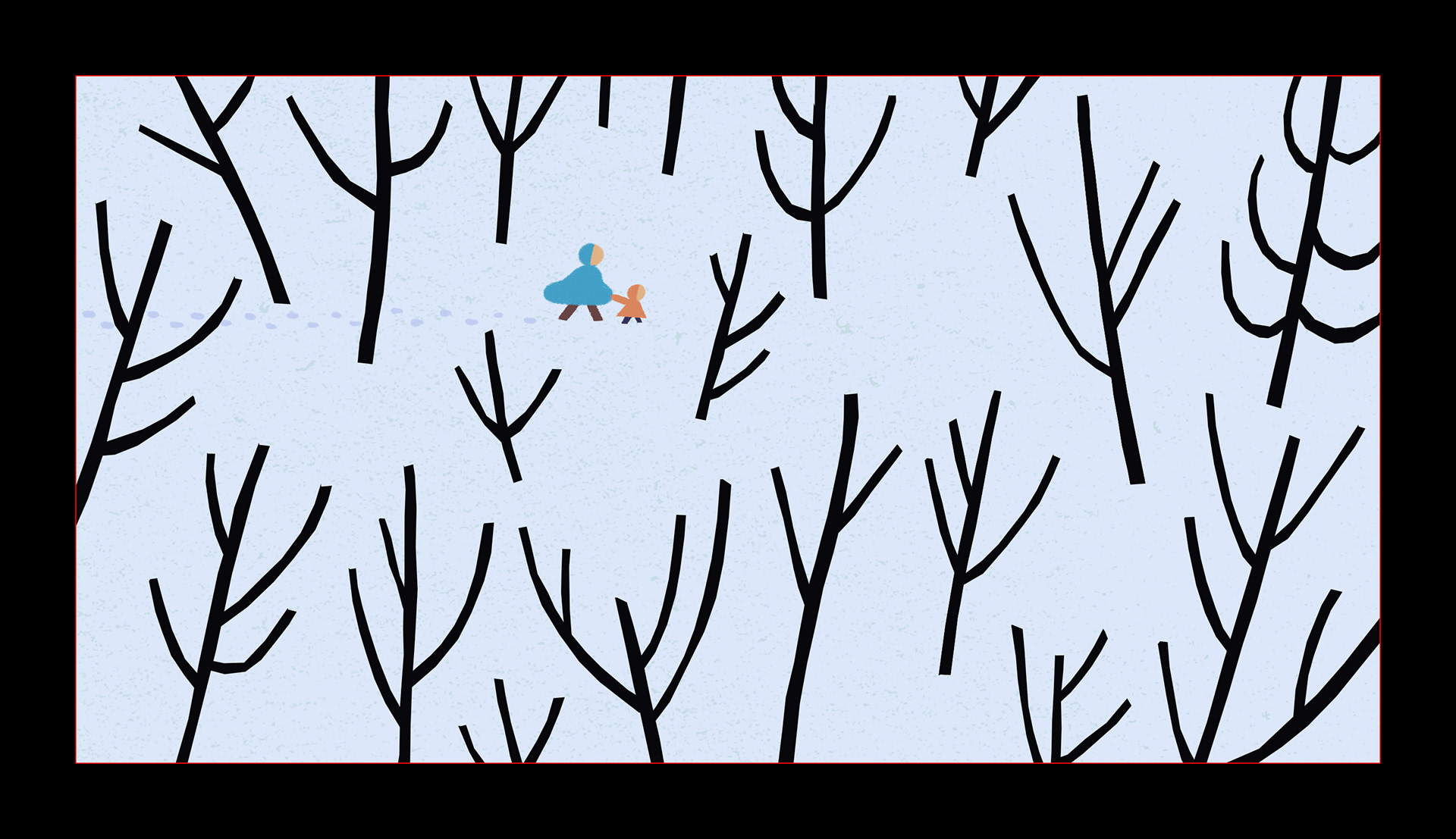
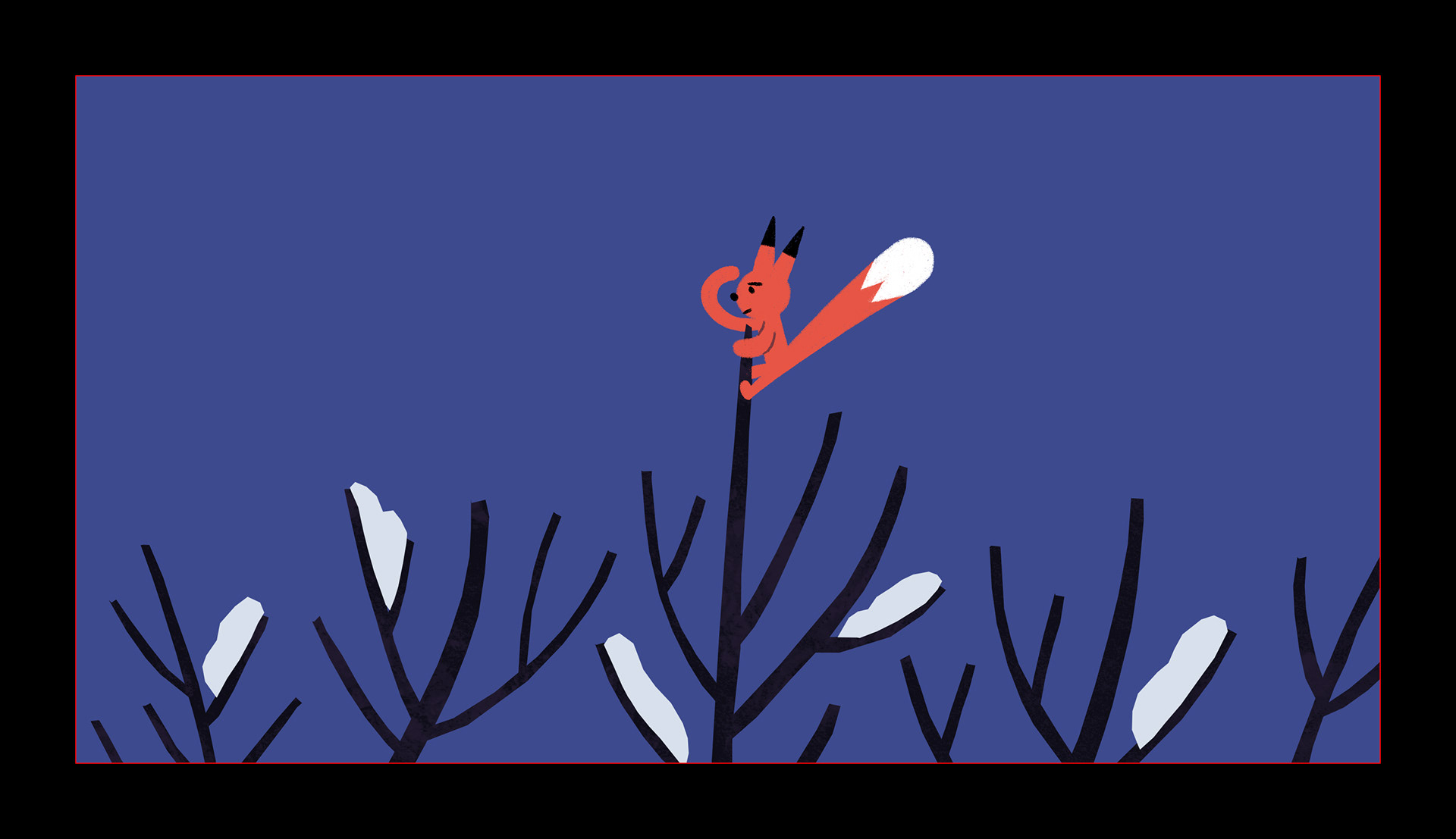
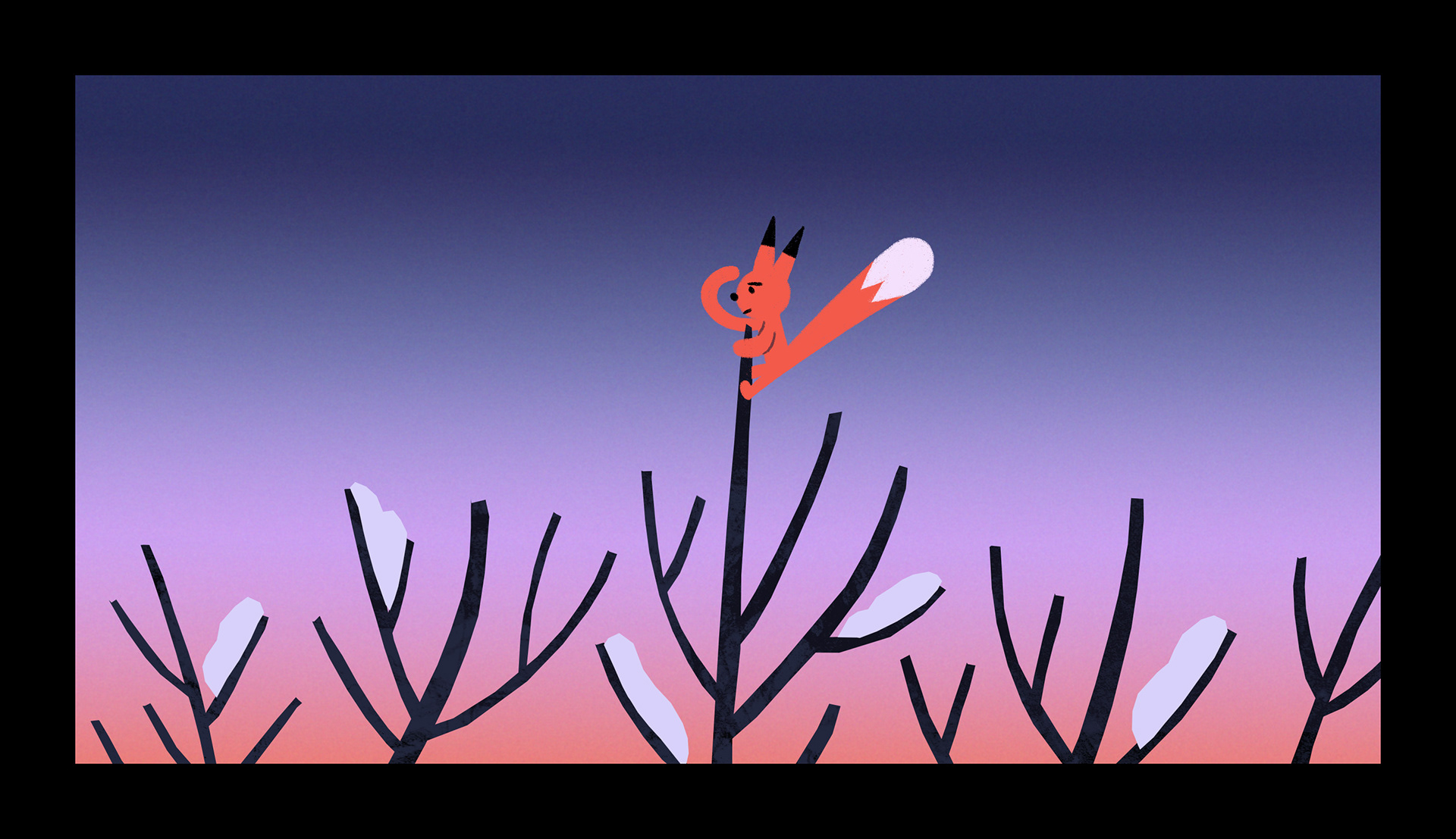
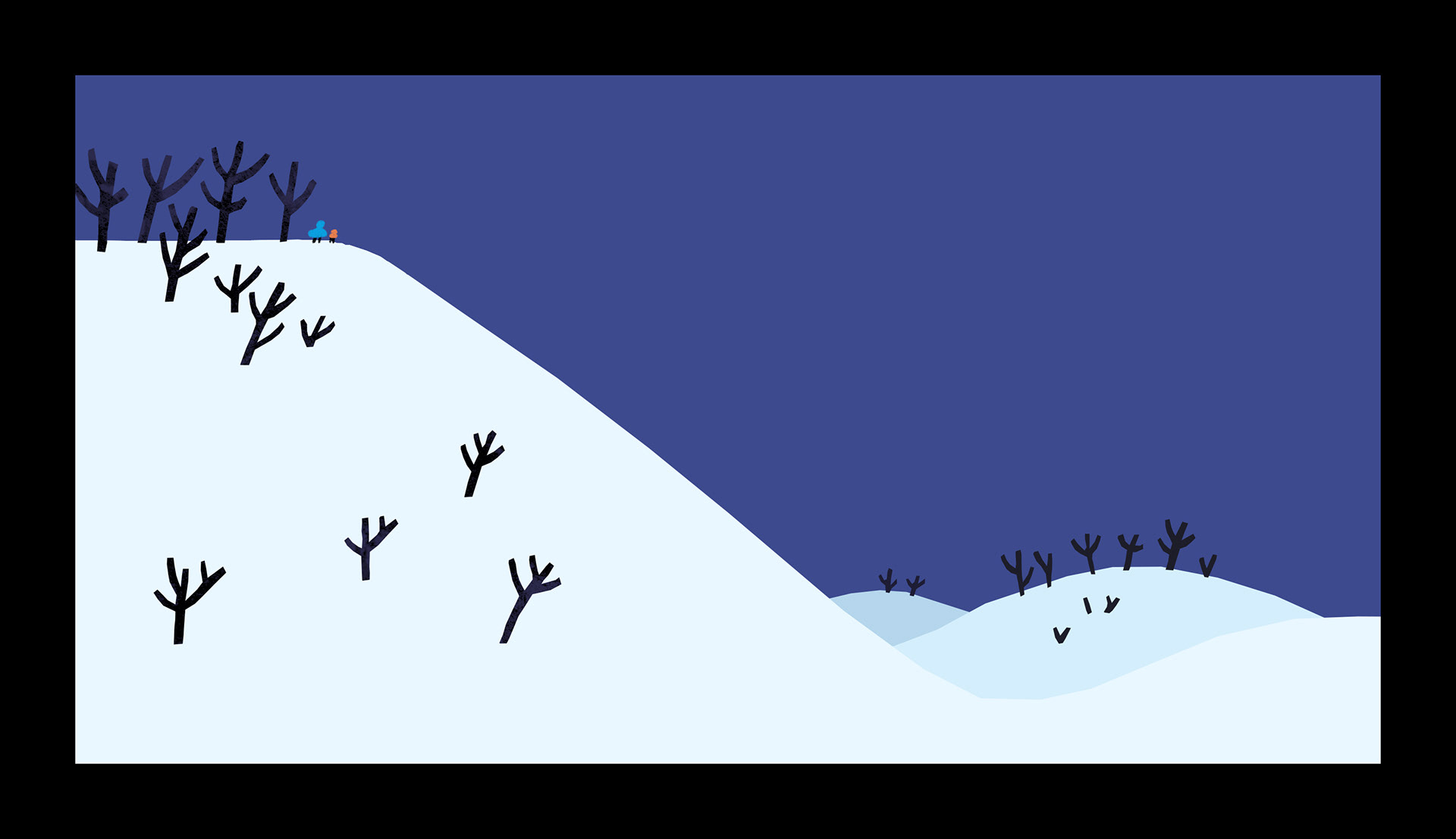
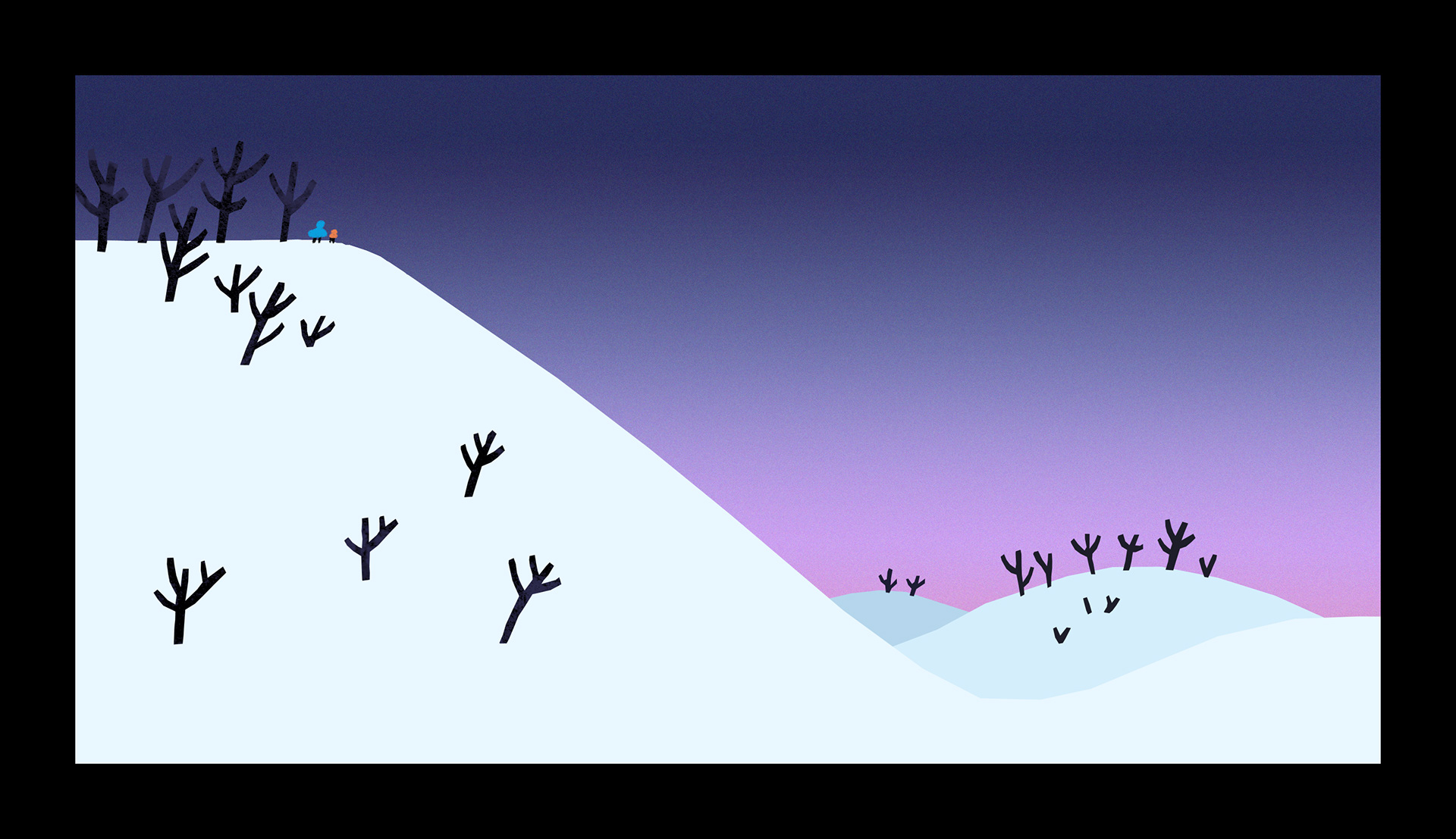
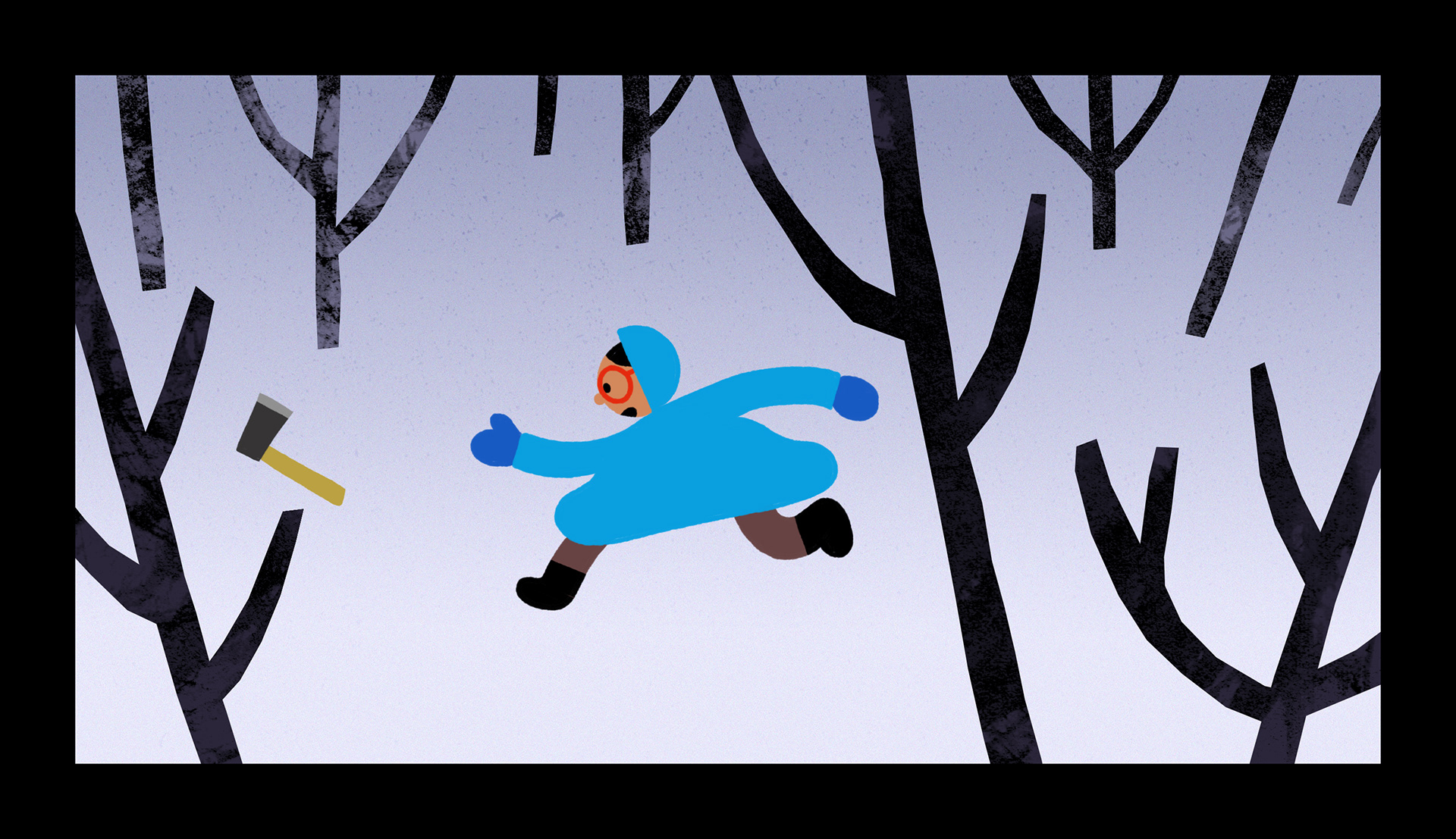
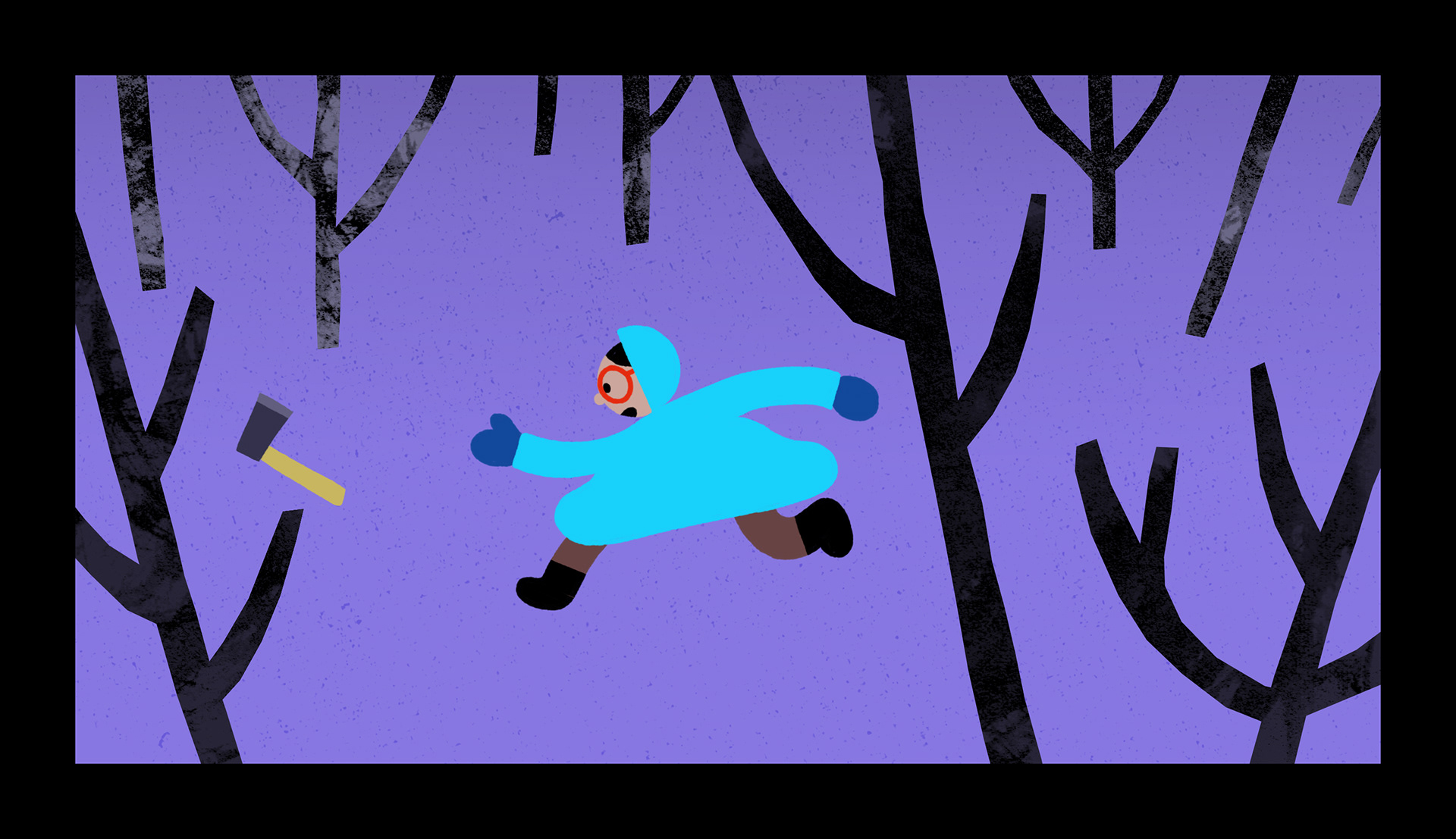
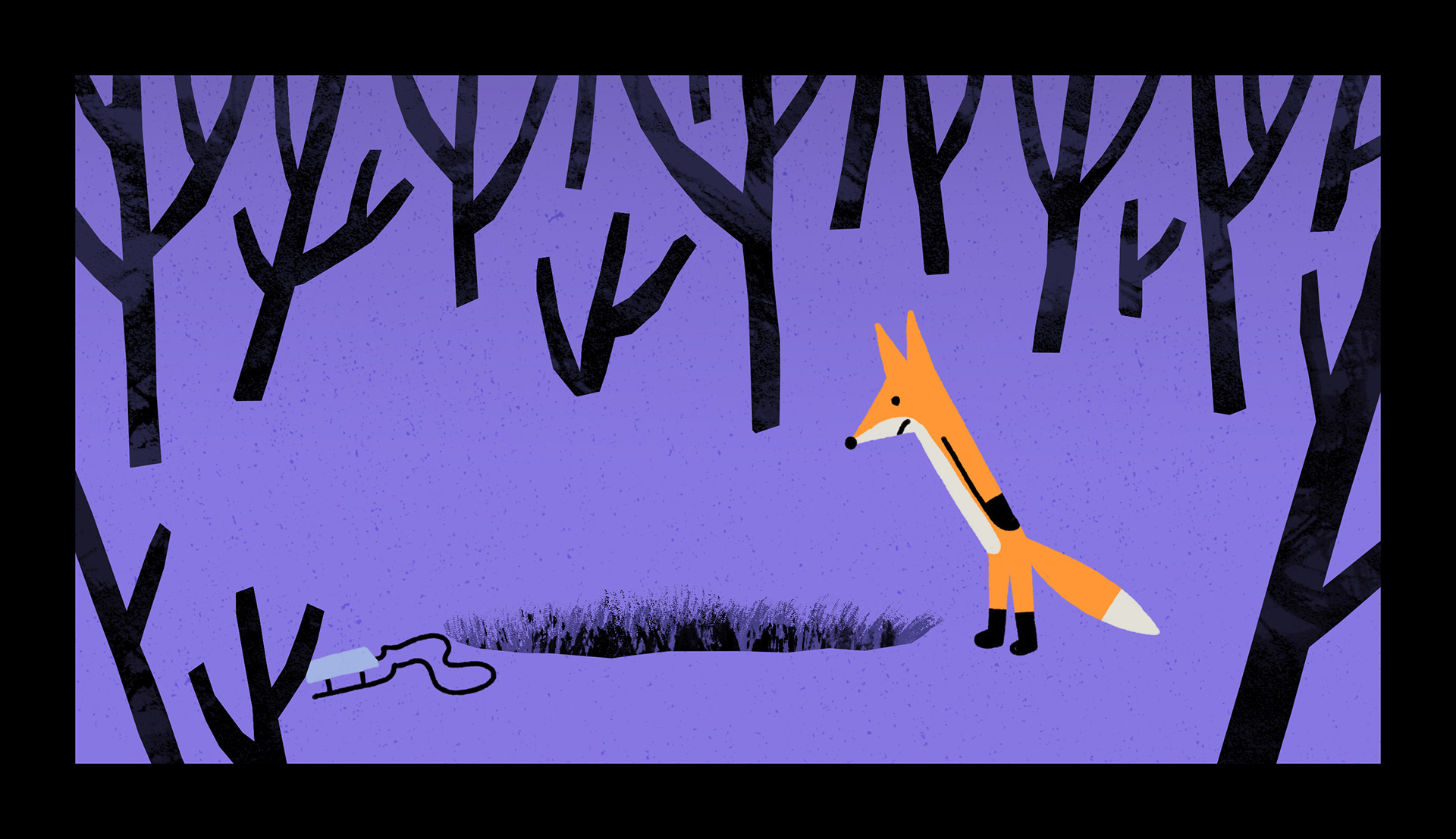
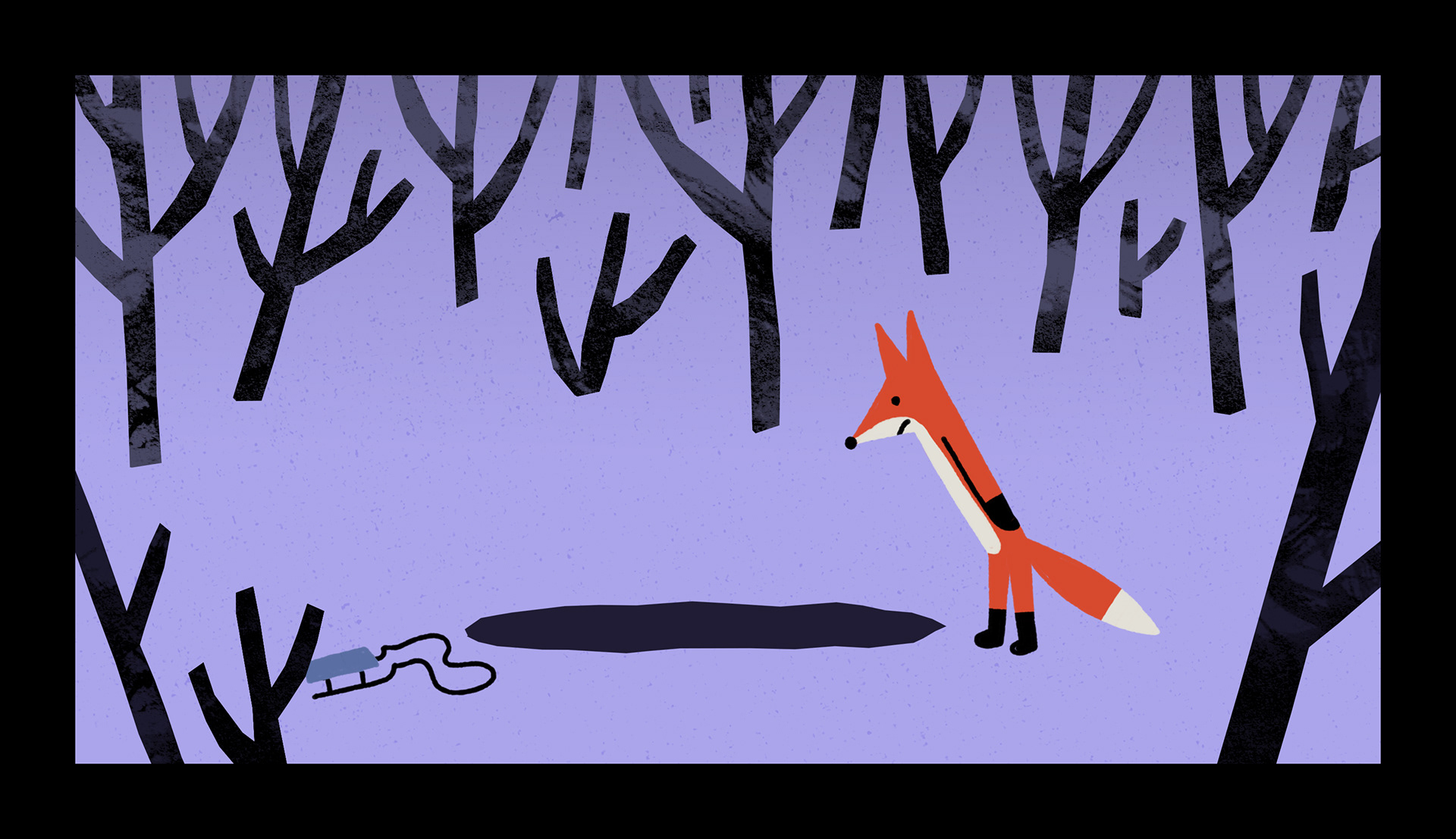
All the textures were handcrafted and applied to the trees, snow, sky, and building walls. I also used some Kyle T. Webster brushes for additional texture details, and I created a custom brush for the outlines. The primary tool we used was the Lasso, which acted like scissors for cutting out the main shapes.
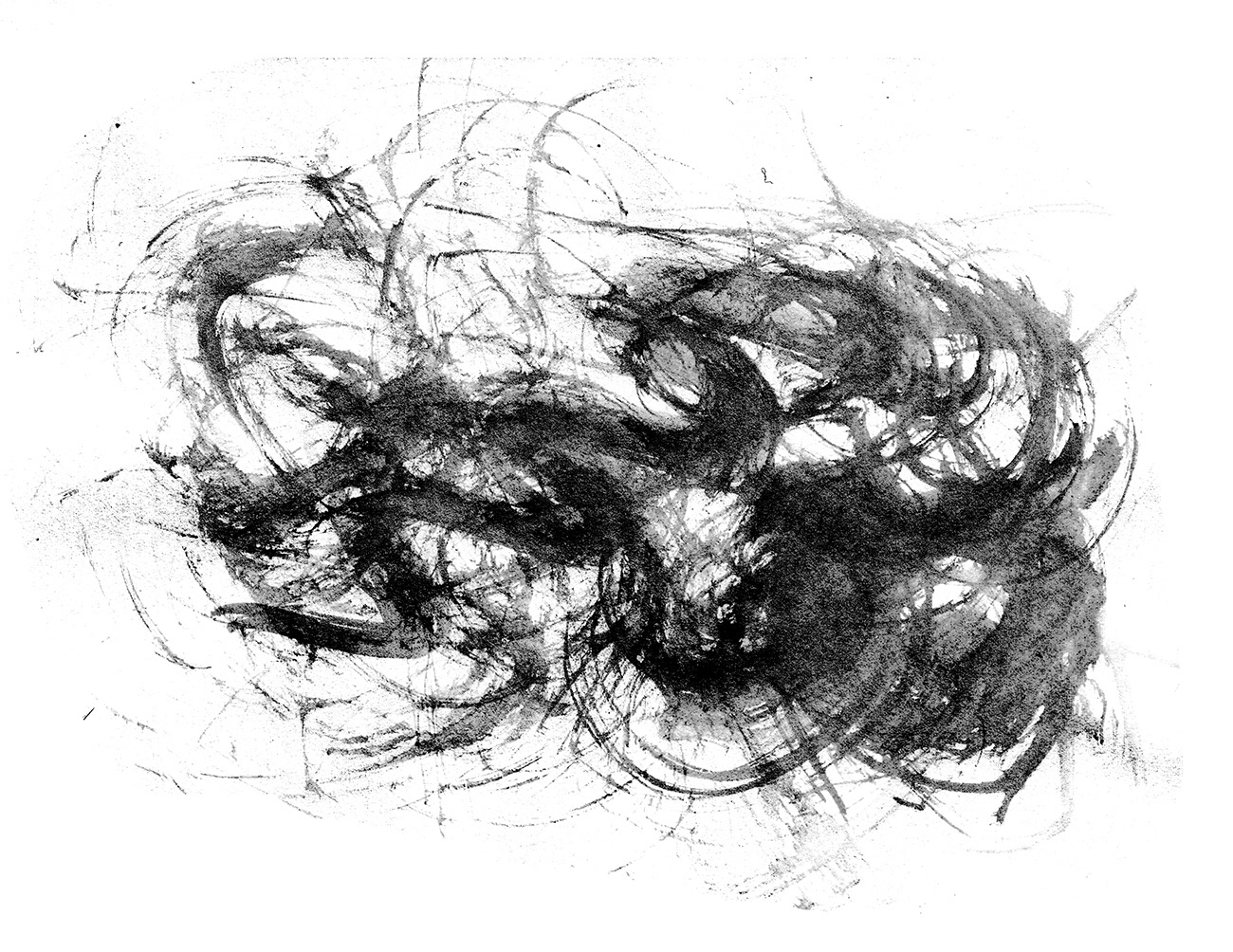
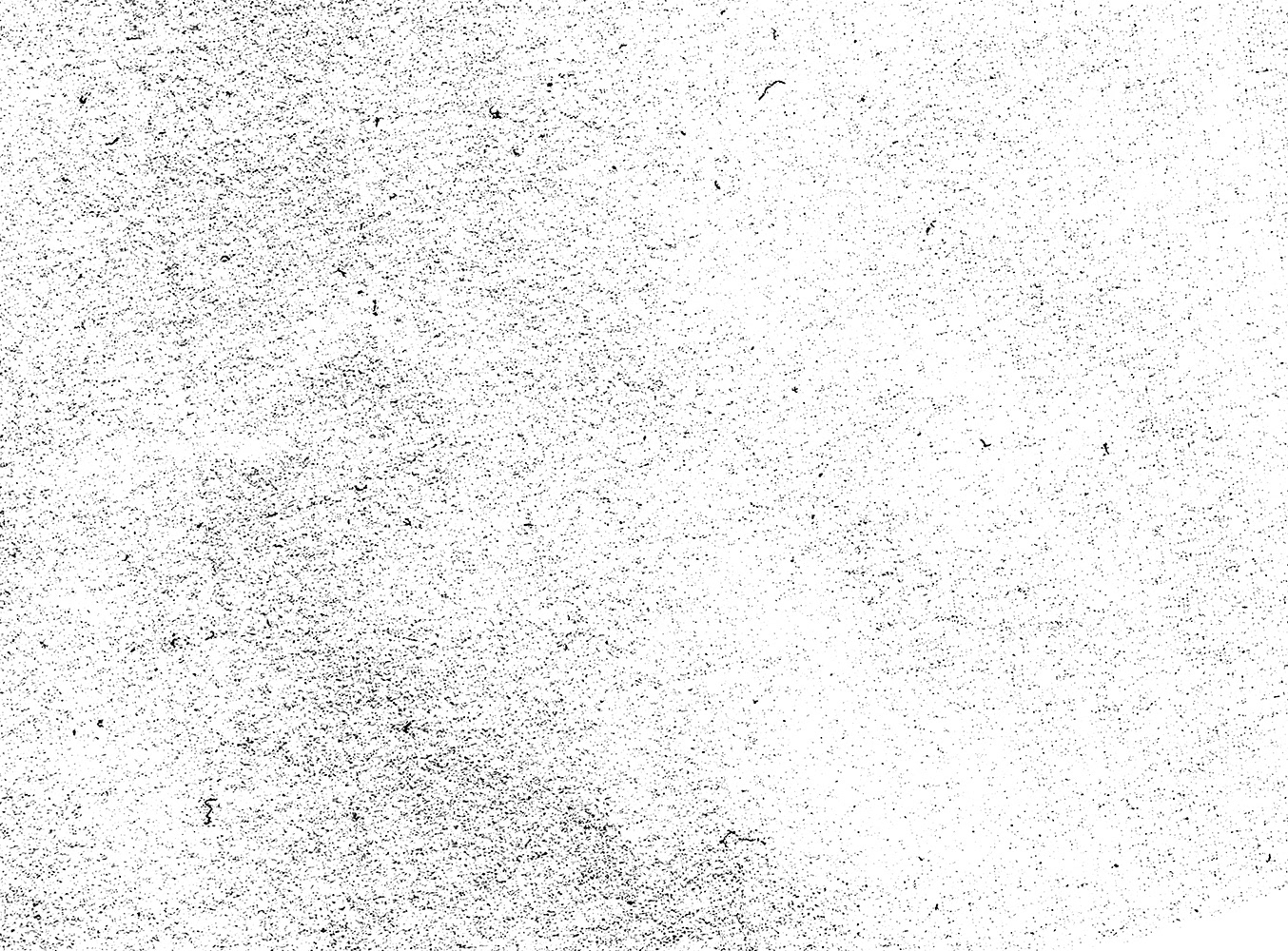
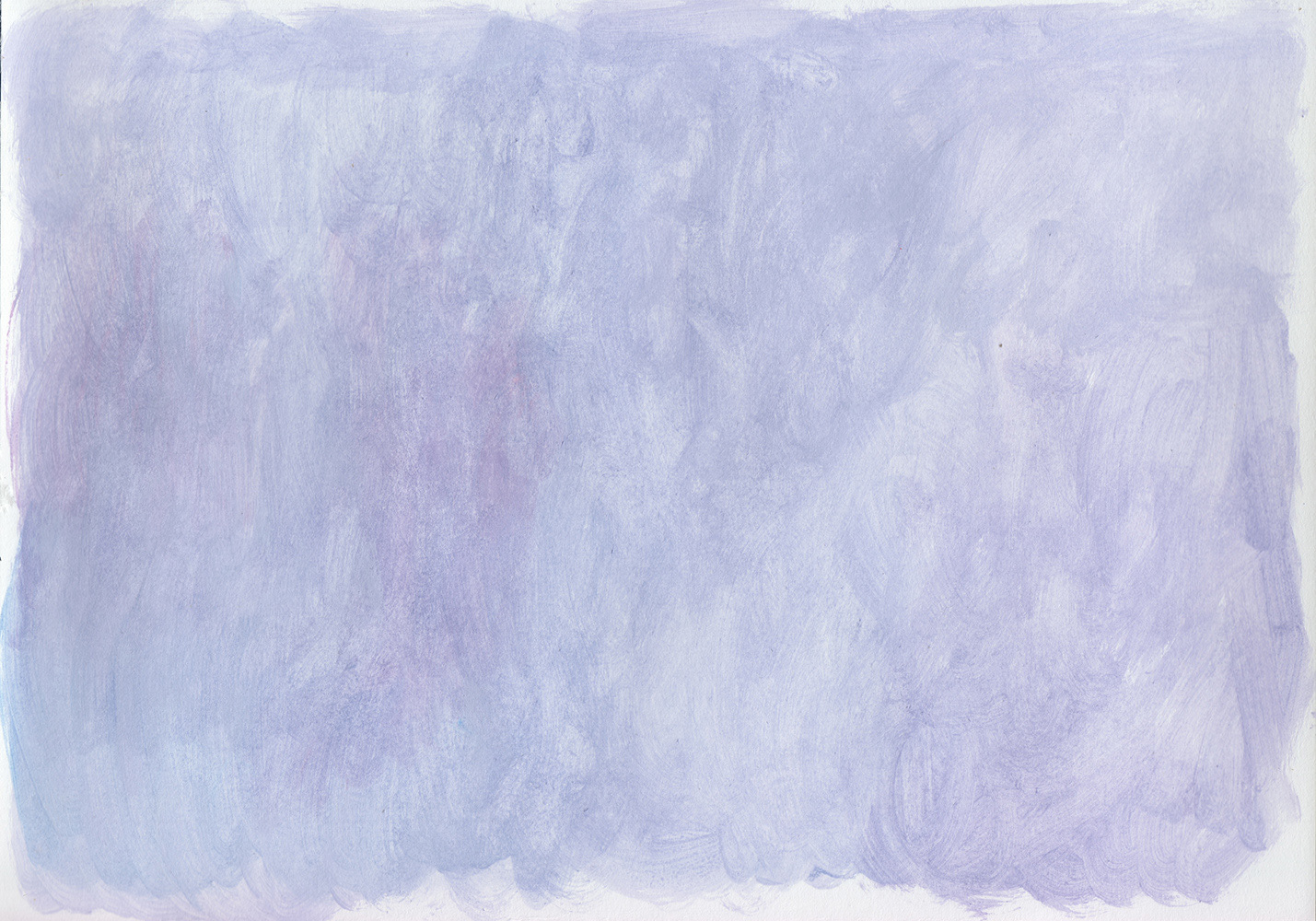
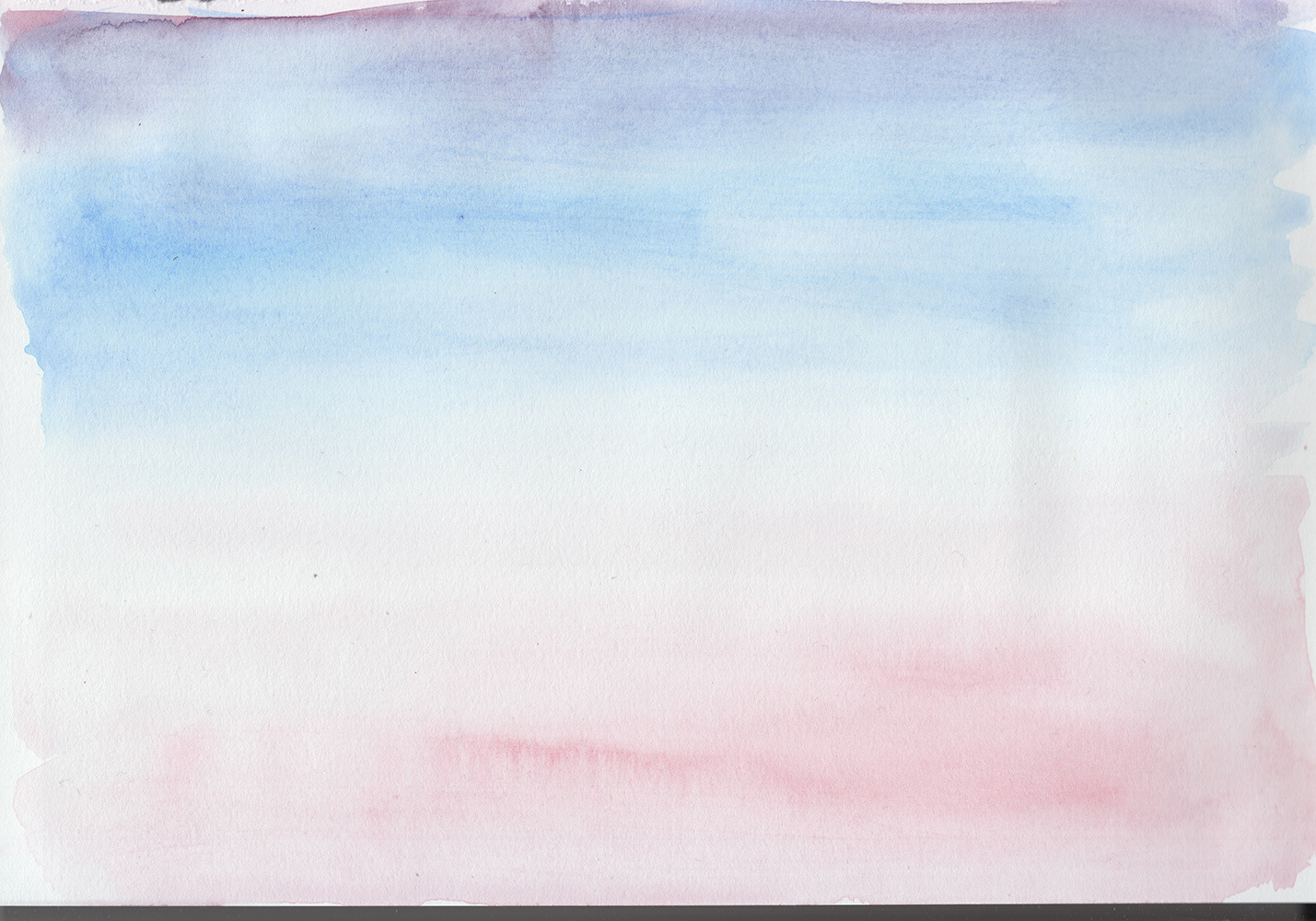
Some backgrounds were very tricky and it was hard to come up with the right result from the first attempt. I redrew certain backgrounds when animation was already done. It's never late to improve things that bother especially if it's a short format and the director can really touch the work.
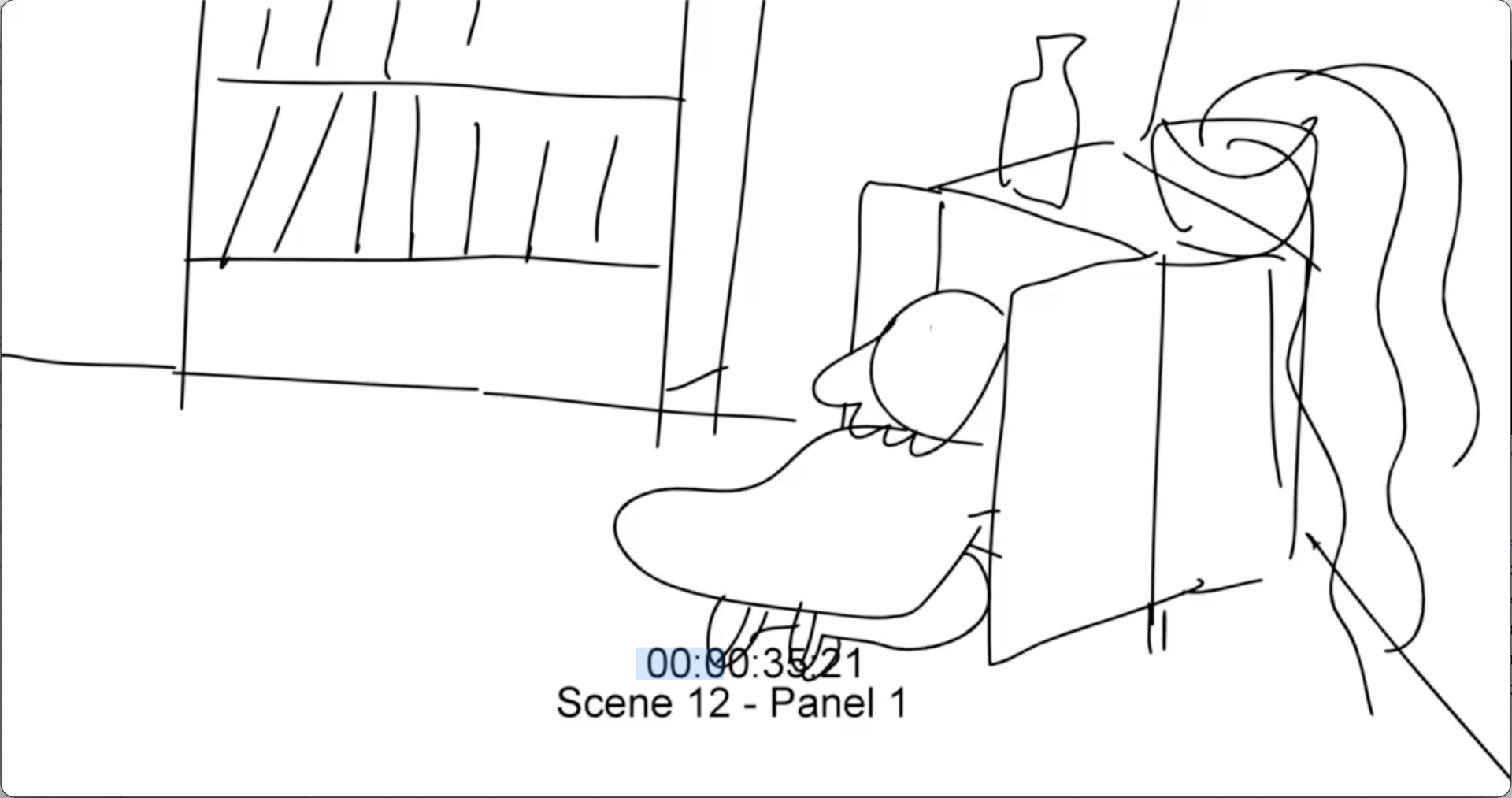
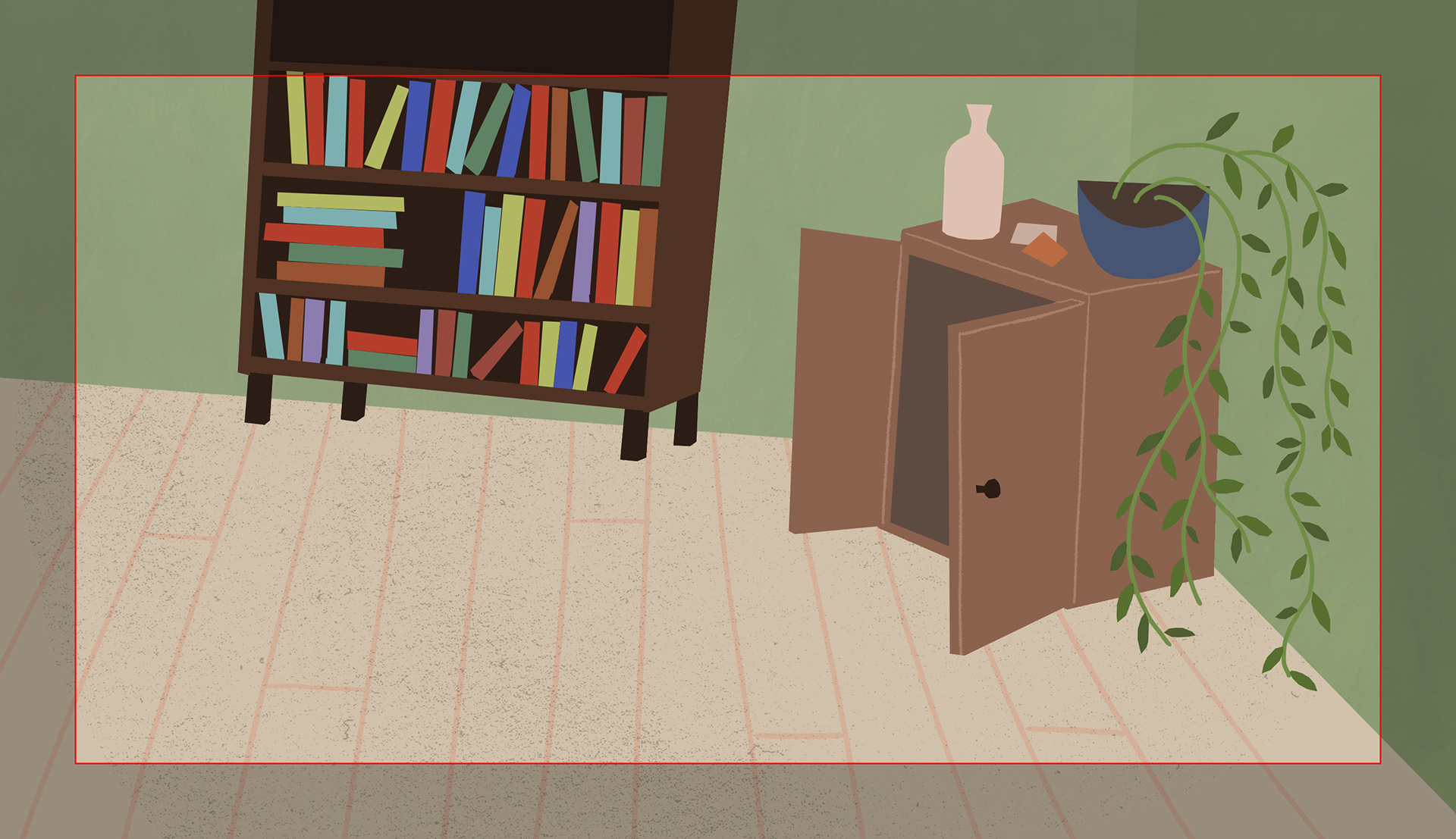
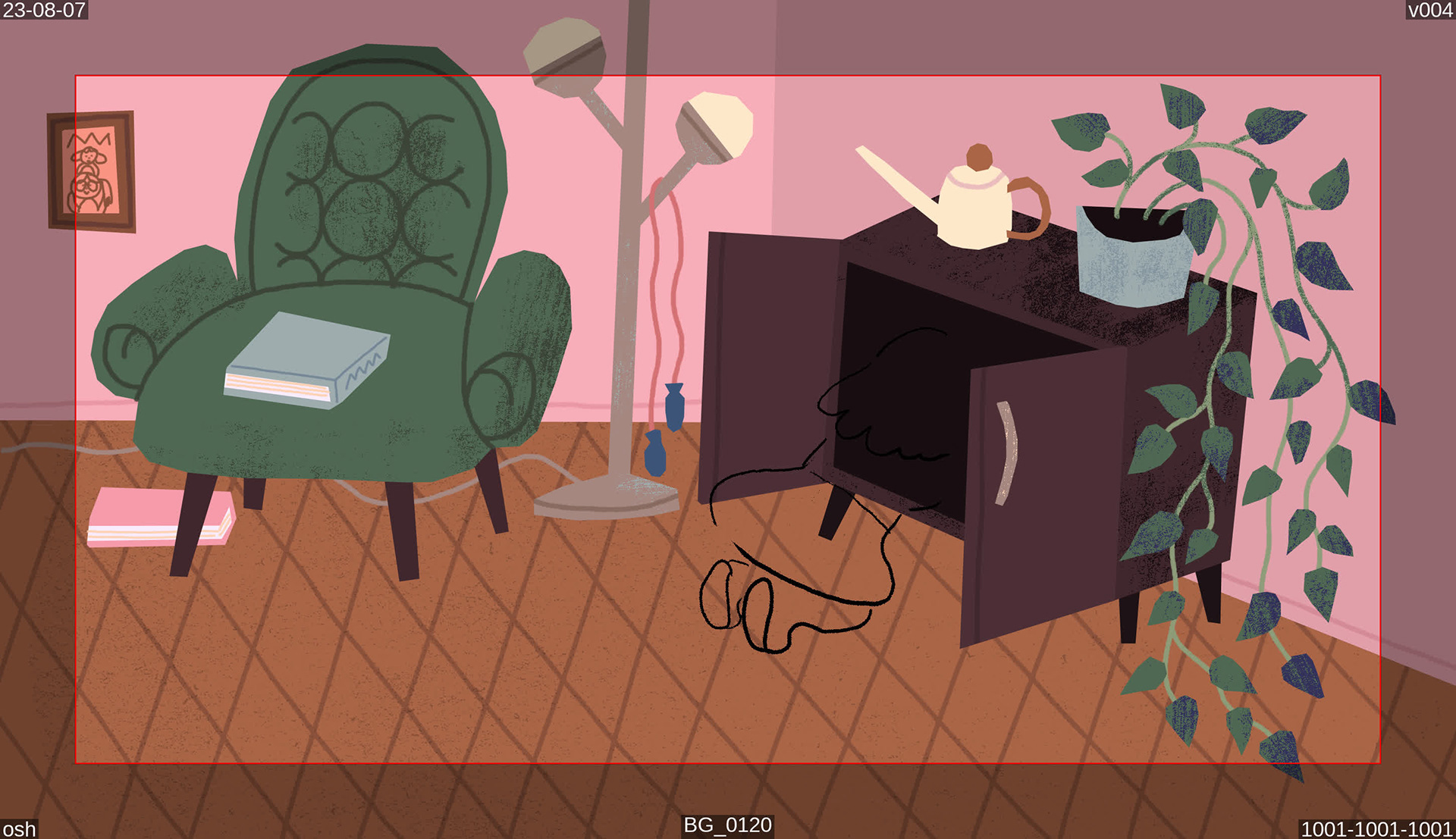
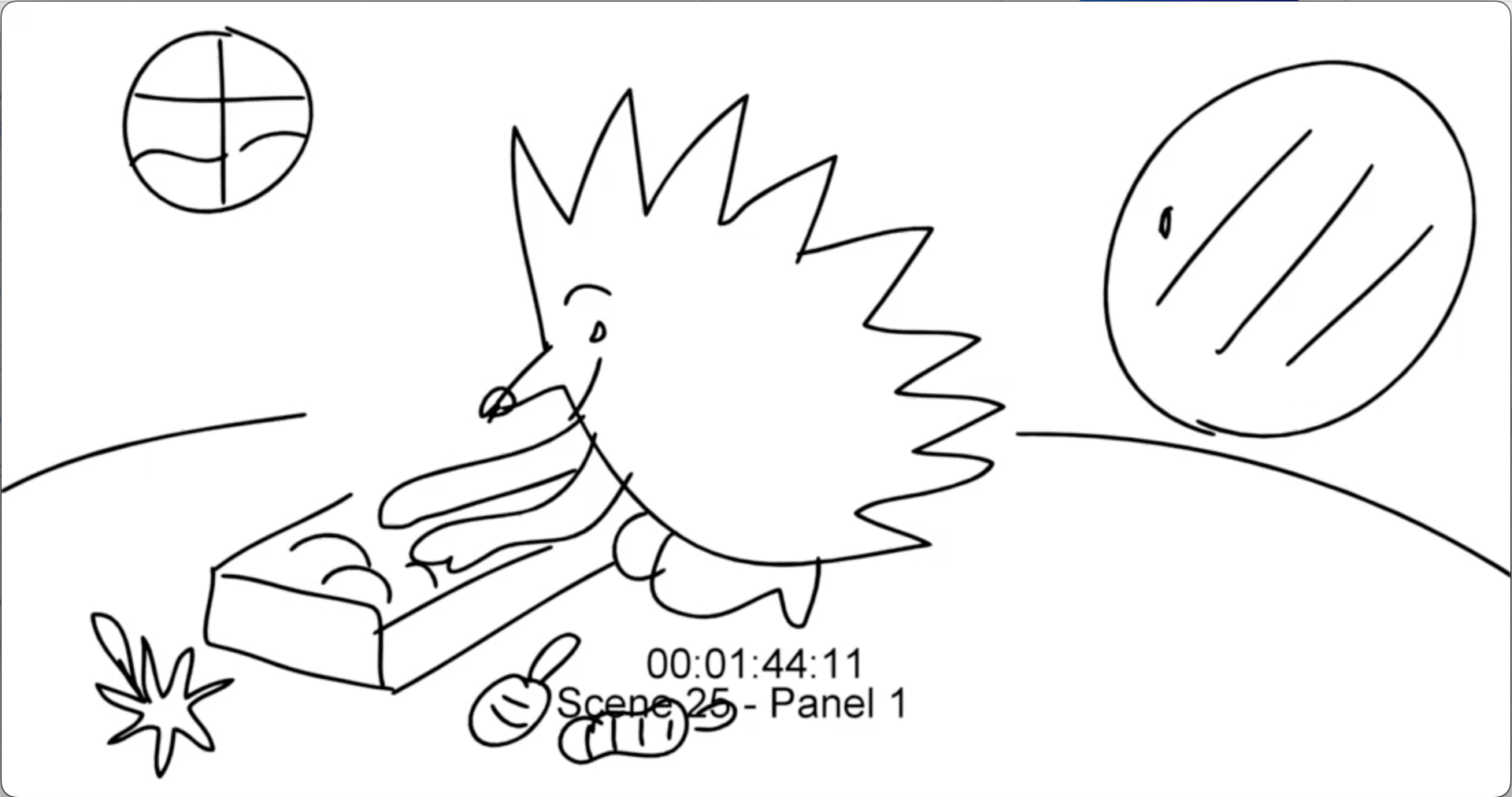
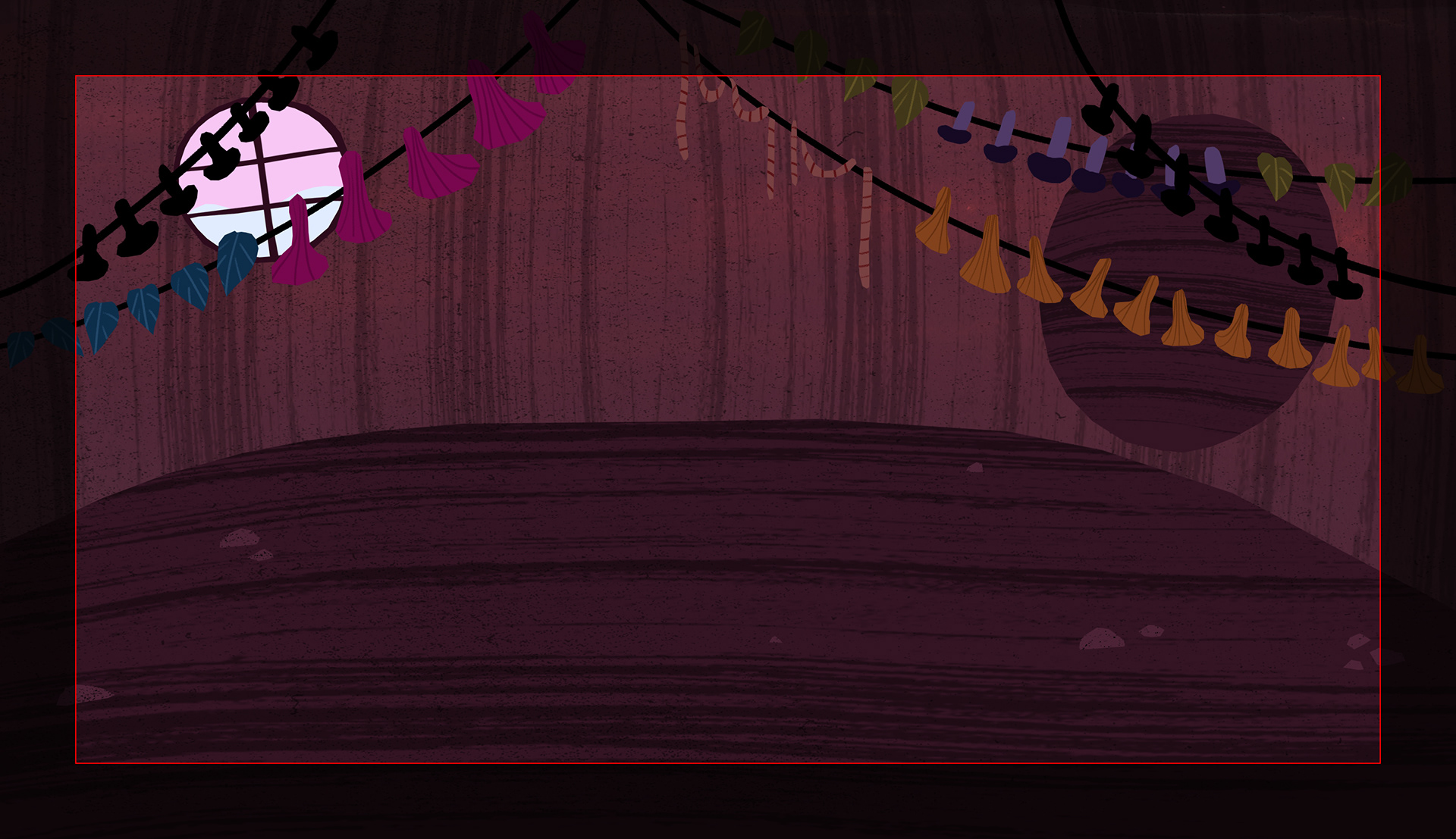
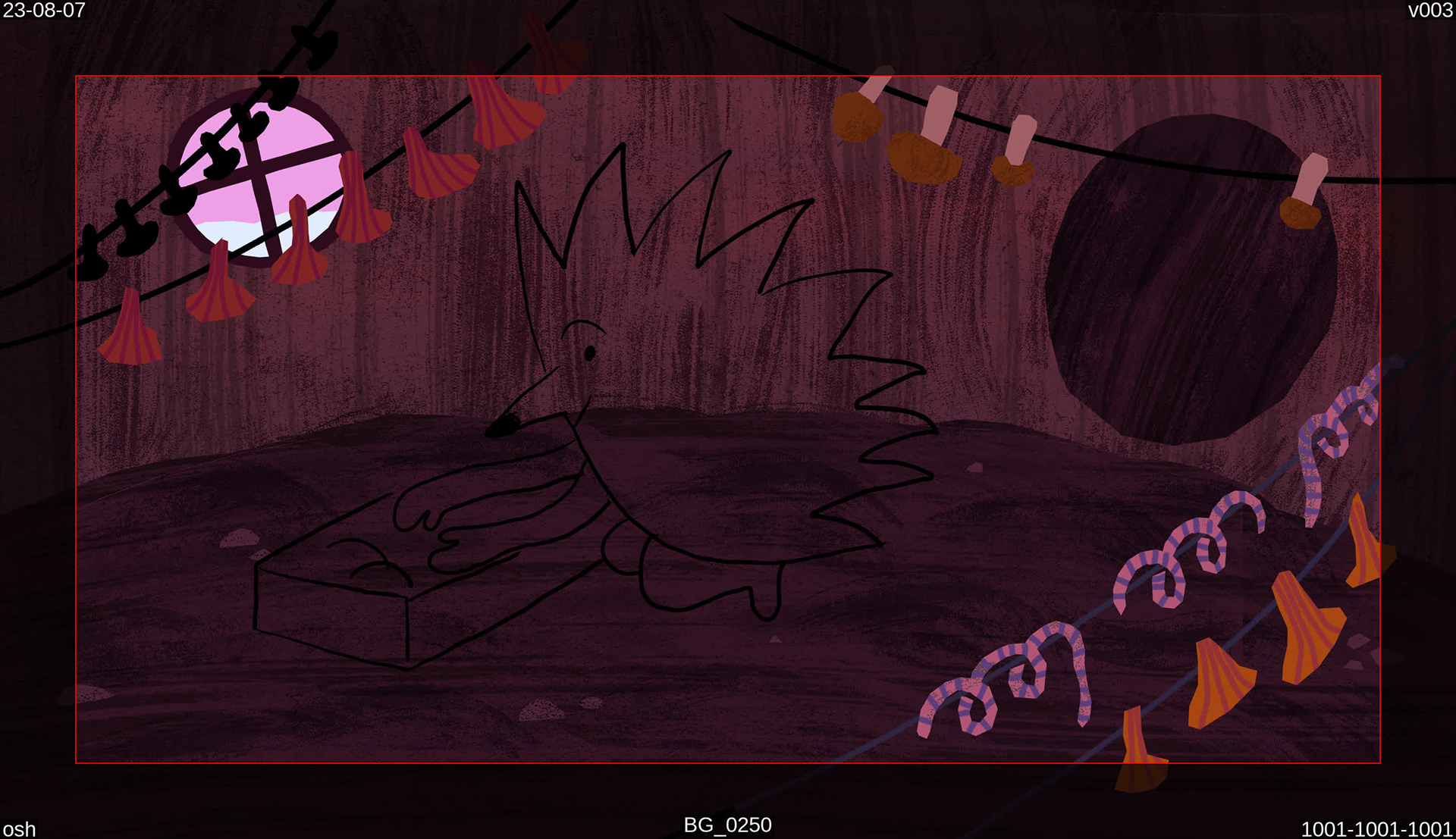
This was my first time creating a color script for the film, as I wanted to have more control over the visual tone. At the beginning, the setting is in the afternoon, but as the story progresses, night falls and the light shifts dramatically. This reflects my perception of winter light, which is unstable and hard to capture: the day is brief and faint, while the night is intense and dominant. The final colors in the film differ slightly, but the color script was definitely a helpful guide
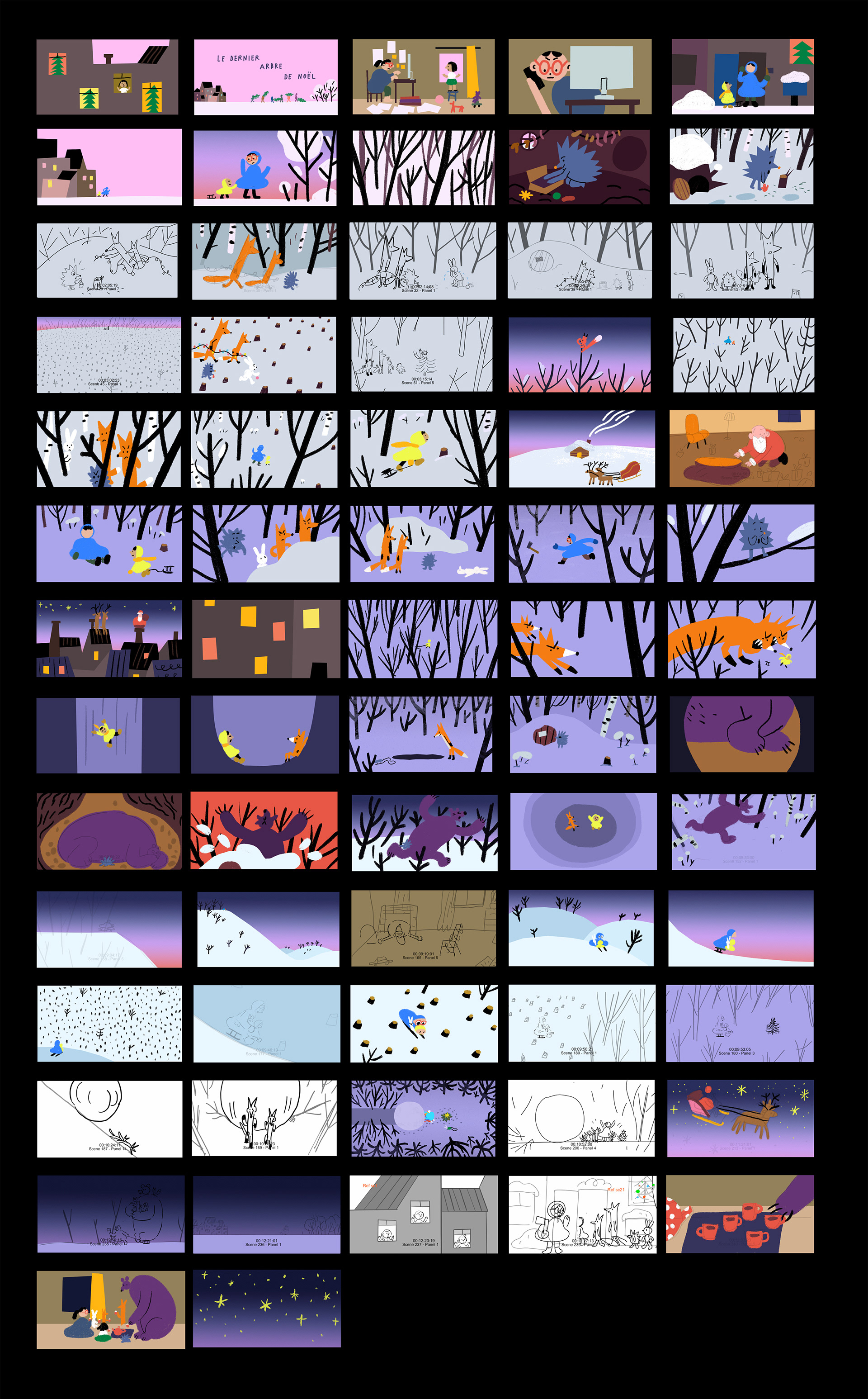
I wanted the characters to be simple but appealing. It was important to make them easy to tell apart by shape and color. Since this was a cut-out animation, some parts were reused, but the arms and legs were often animated frame by frame.
We created all the character assets in Adobe Animate, making it easier for animators to blend cut-out and hand-drawn animation. Since Animate is a vector-based software, the same assets could be used for any scene, even close-ups! Here are the turn-around animations for the girl and the hedgehog.
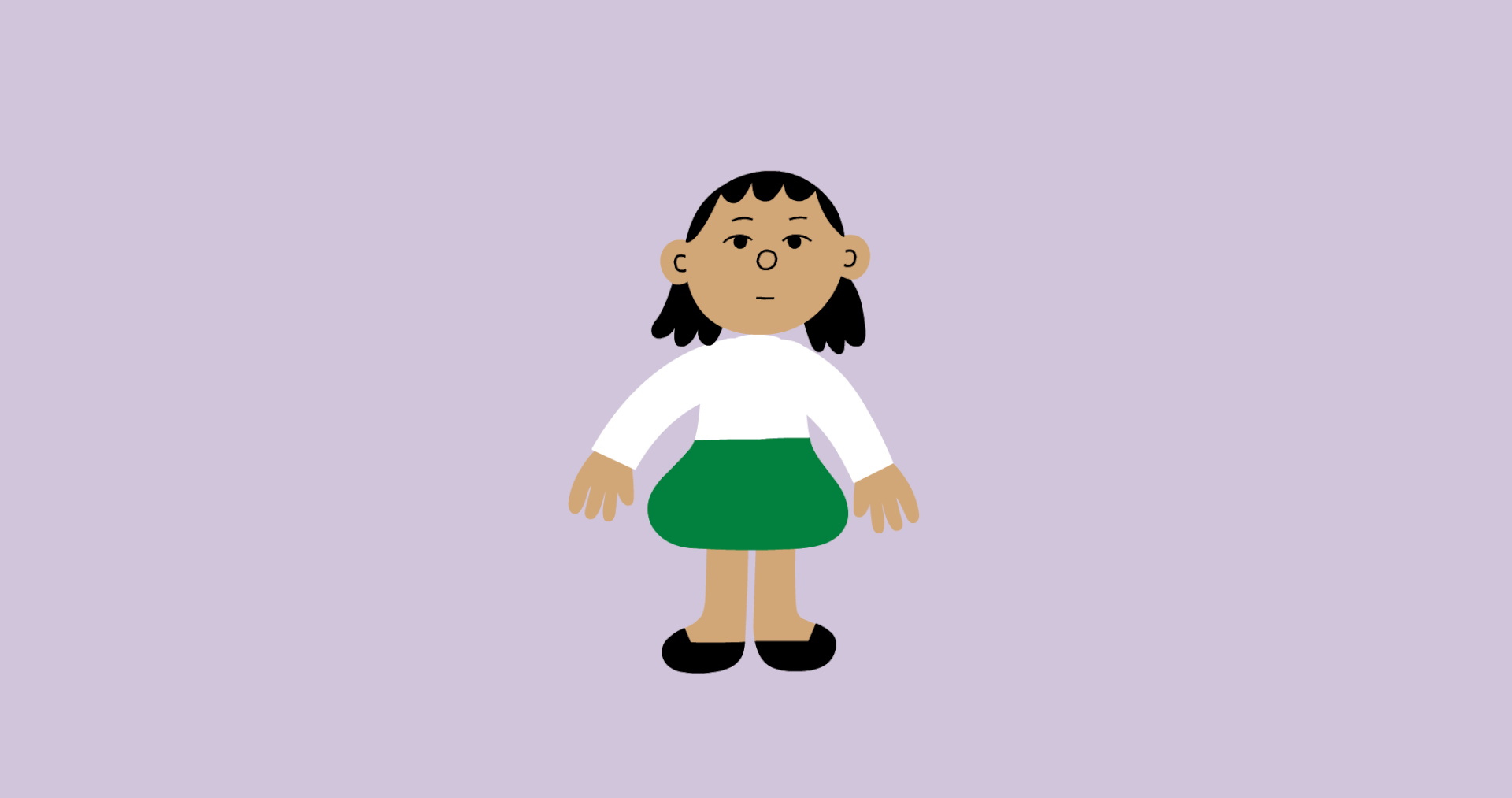
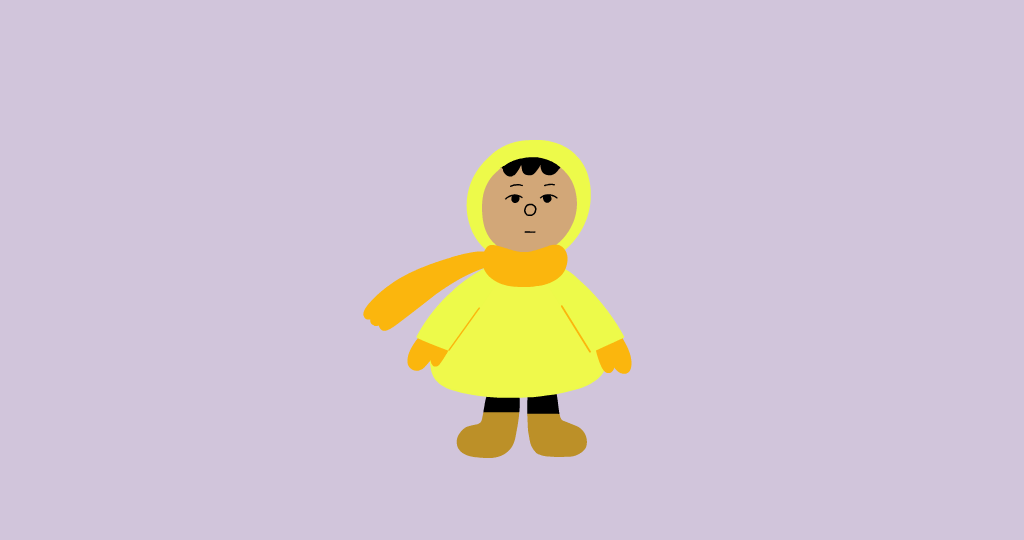
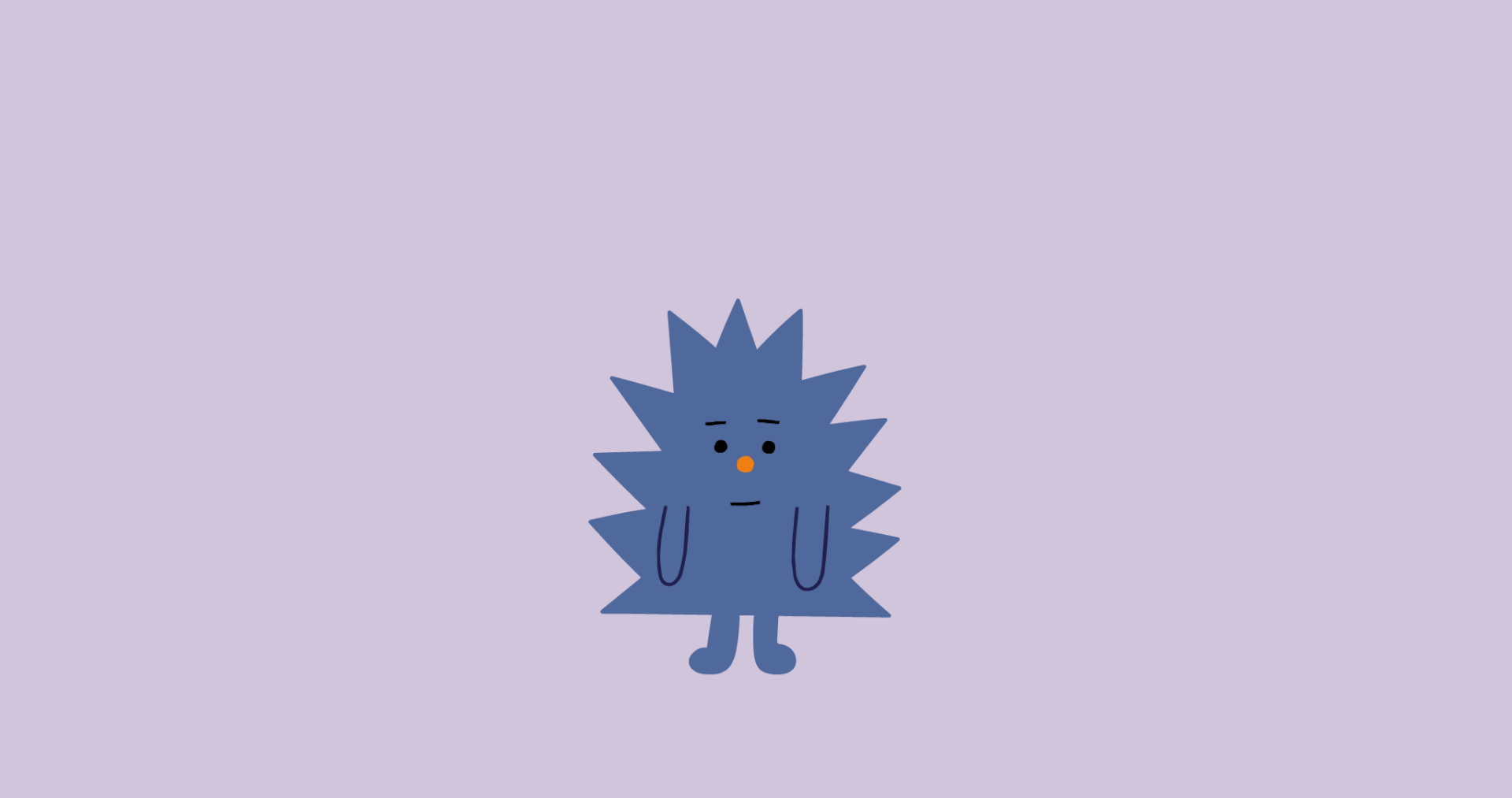
Final assets with some notes on the line thickness. To keep the style persistent, it was important to respect the line size.
I couldn’t animate the film myself, but I had to ensure my animators understood exactly what I envisioned. It’s challenging to convey the "feel" of a particular animation style, but layouts were crucial for maintaining control over it.
The layouts were created by Amélie, my animation director, who led the animation team. Once she finished, I reviewed them all and made adjustments to align with my vision. Even though the animation was cut-out, I wanted the poses to be sharp and precise.
Now, play the game and find the "x" differences! :-)
I had a small but incredibly talented production team. Below is a list of the amazing people who made it all possible.
Background artists: Zozo Jhen and Josepha Huige.
Animation Director: Amélie Lefevre.
The post-production team is also worth mentioning!
Original Music: Pablo Pico
Editing: Céline Kélépikis
Sound Editing: Antoine Bertucci
Color Grading: David Chantoiseau
Sound Mixer: Vincent Arnardi
Thank you for reading my making of!
I hope the movie will be available on DVD or VOD very soon.
Or maybe it will be back to cinemas in December? 🌟
